What Is Dental SEO?
Dental SEO (search engine optimization) is the process of optimizing a dental practice’s online presence with the aim of getting more exposure in unpaid search engine results. It’s a marketing tactic that helps dentists acquire new patients.
For example, dental SEO can help you earn Google rankings like this:
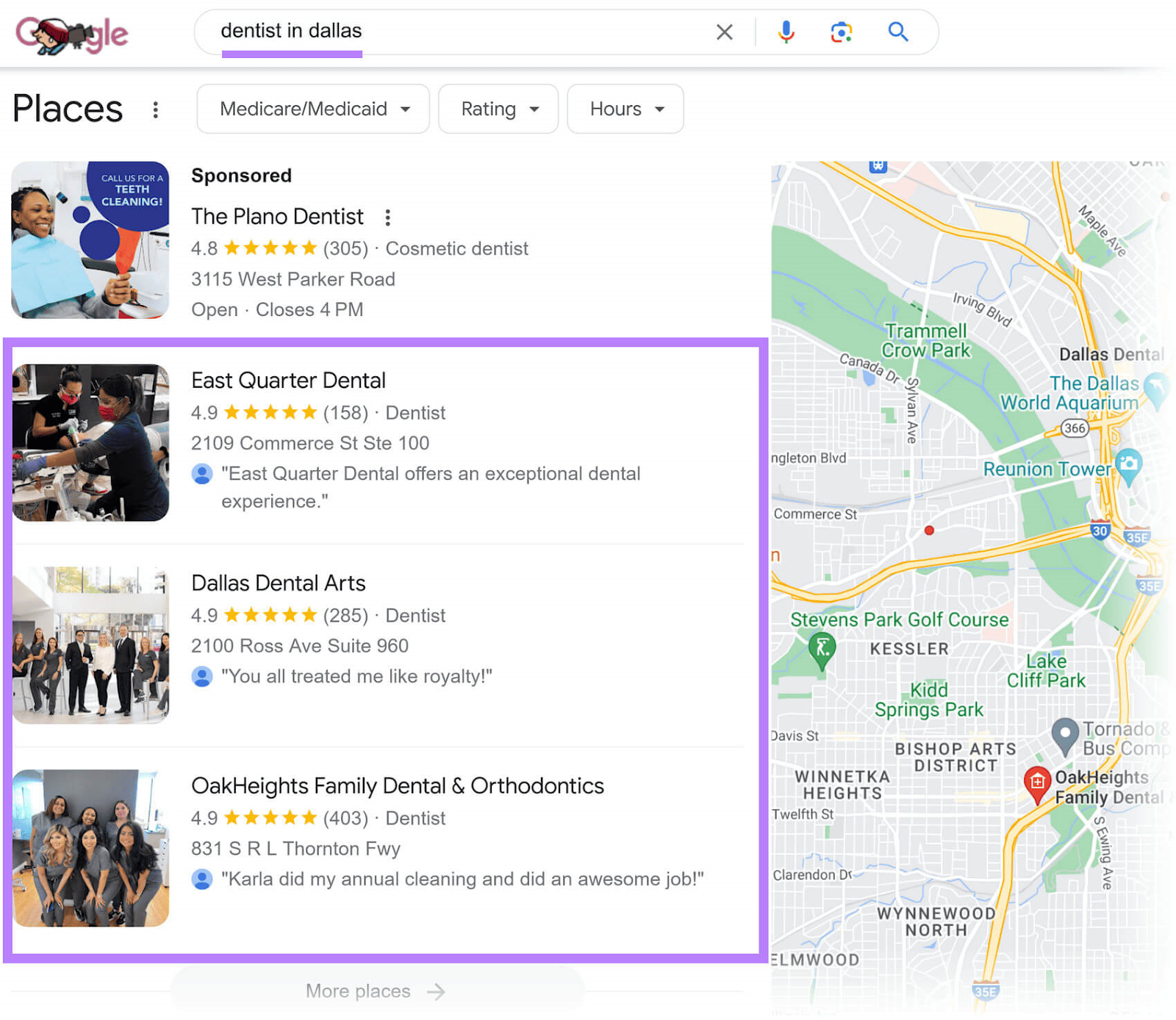
And this:
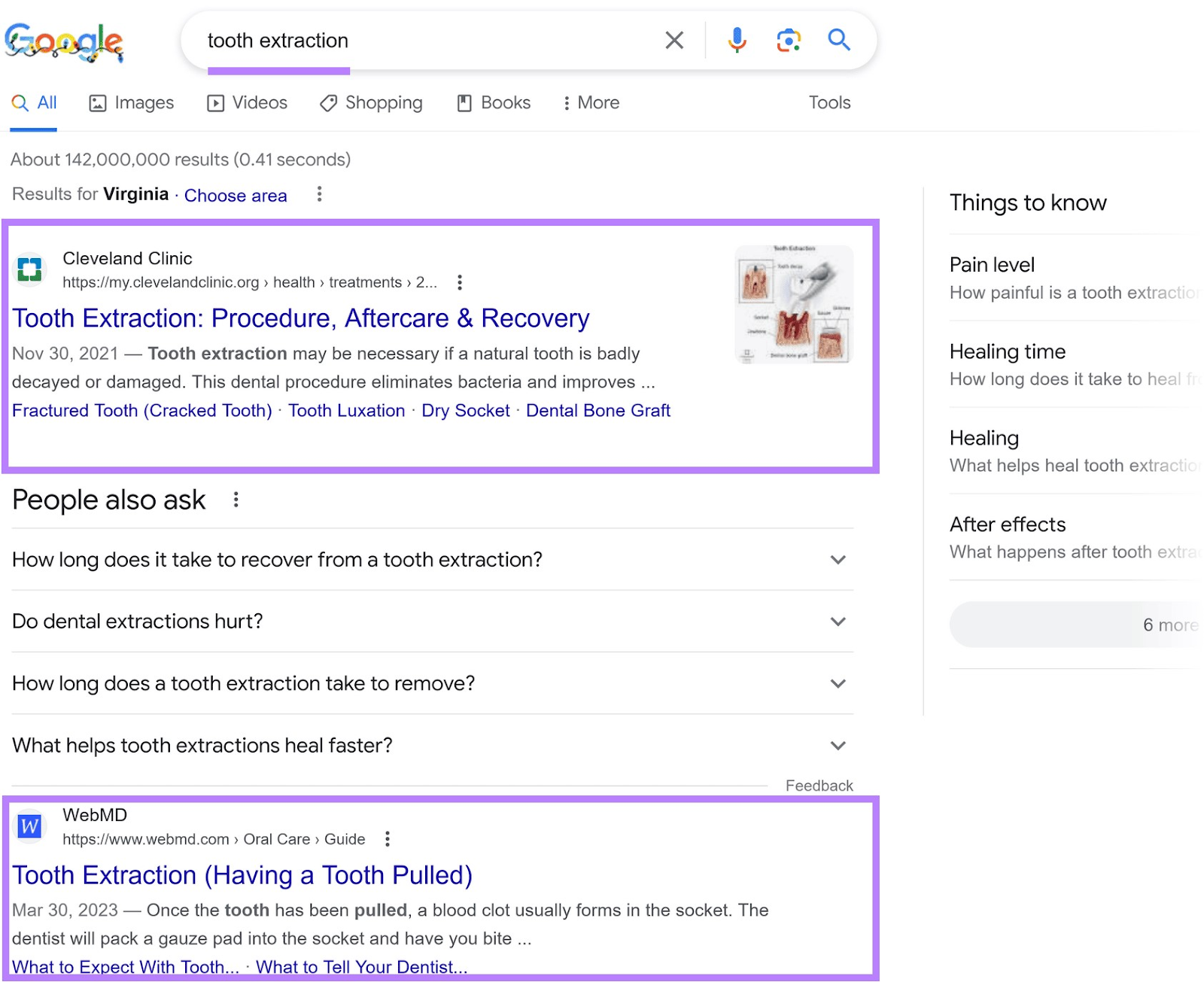
This exposure can drive people to visit your website or contact your practice.
Dental practice SEO can benefit general dentists, orthodontists, pediatric dentists, periodontists, prosthodontists, oral surgeons, and endodontists. No matter their size or location.
Why Is SEO Important for Dentists?
SEO is important for dentists because many patients look for dental services and information through search engines.
For example, there are over 1.2 million Google searches for “dentist near me” in the U.S. every month. According to Semrush’s Keyword Overview tool.
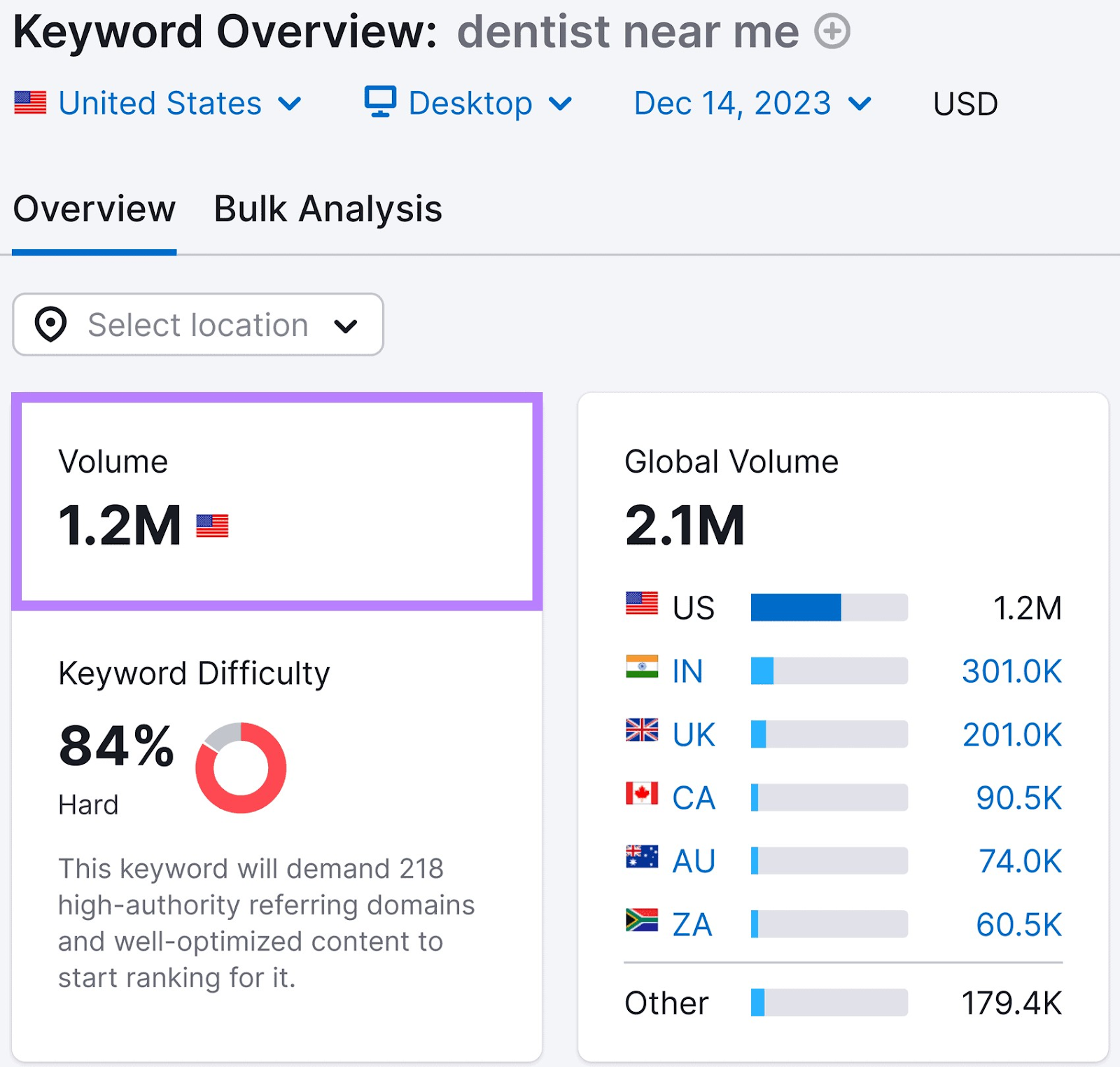
If your dental practice doesn’t appear when people search for relevant keywords, you’ll likely lose business to one of your competitors.
You need to rank prominently, too.
On average, 27.6% of searchers click the top organic (unpaid) result. But only 2.4% click the organic result in position 10.
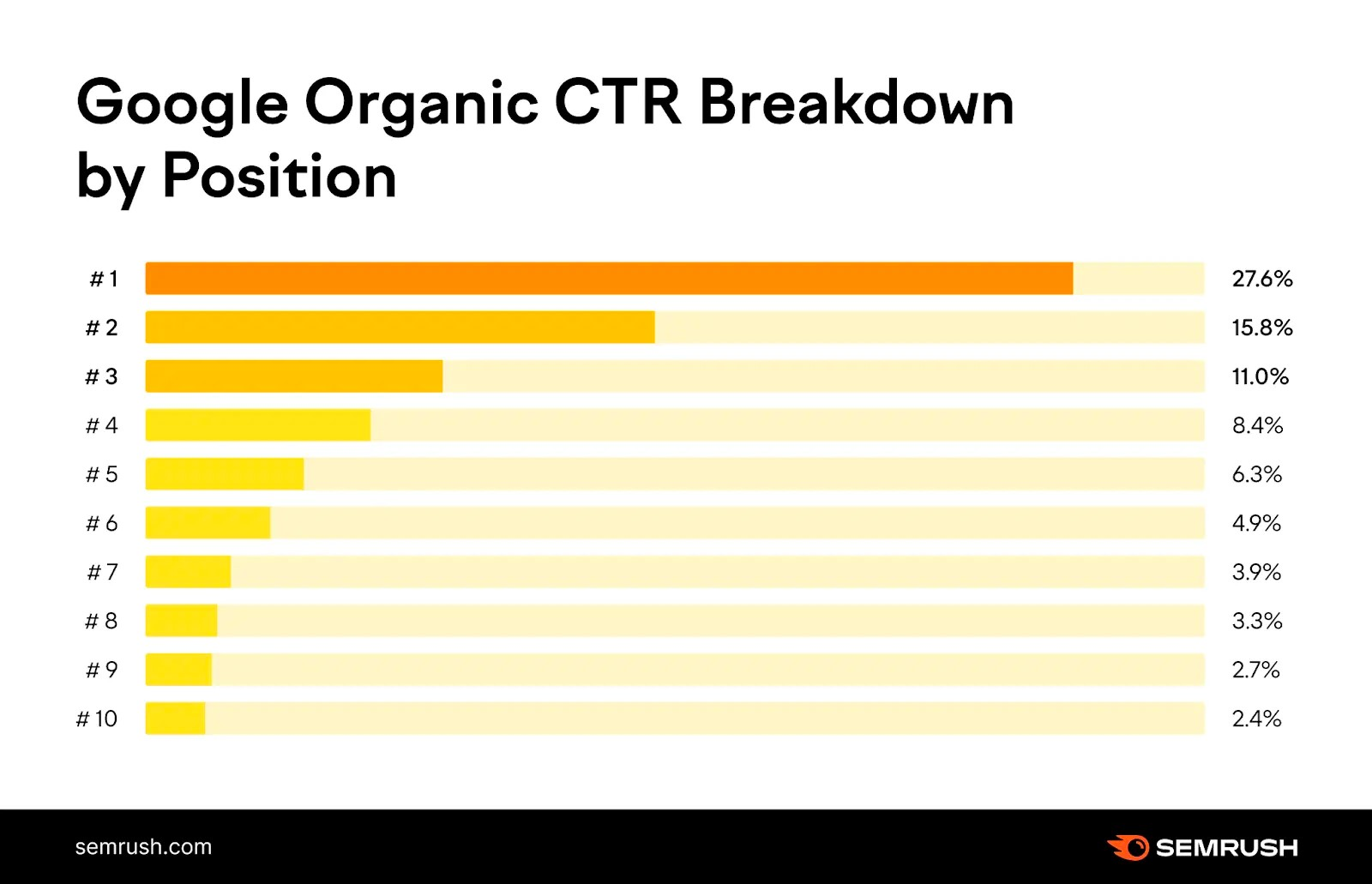
How to Do Dental SEO Marketing
Whether you’re doing SEO for a dentist or another business, the same SEO basics apply.
But dental practices should prioritize some techniques. Particularly when it comes to local SEO (i.e., reaching searchers in your area).
Here are 10 tips for success:
1. Update Your Information on Google Business Profile
Google Business Profile is a free tool that lets you manage your business listing on Google.
Providing complete and accurate information about your dental practice can help your listing rank higher in local results (or the local pack):
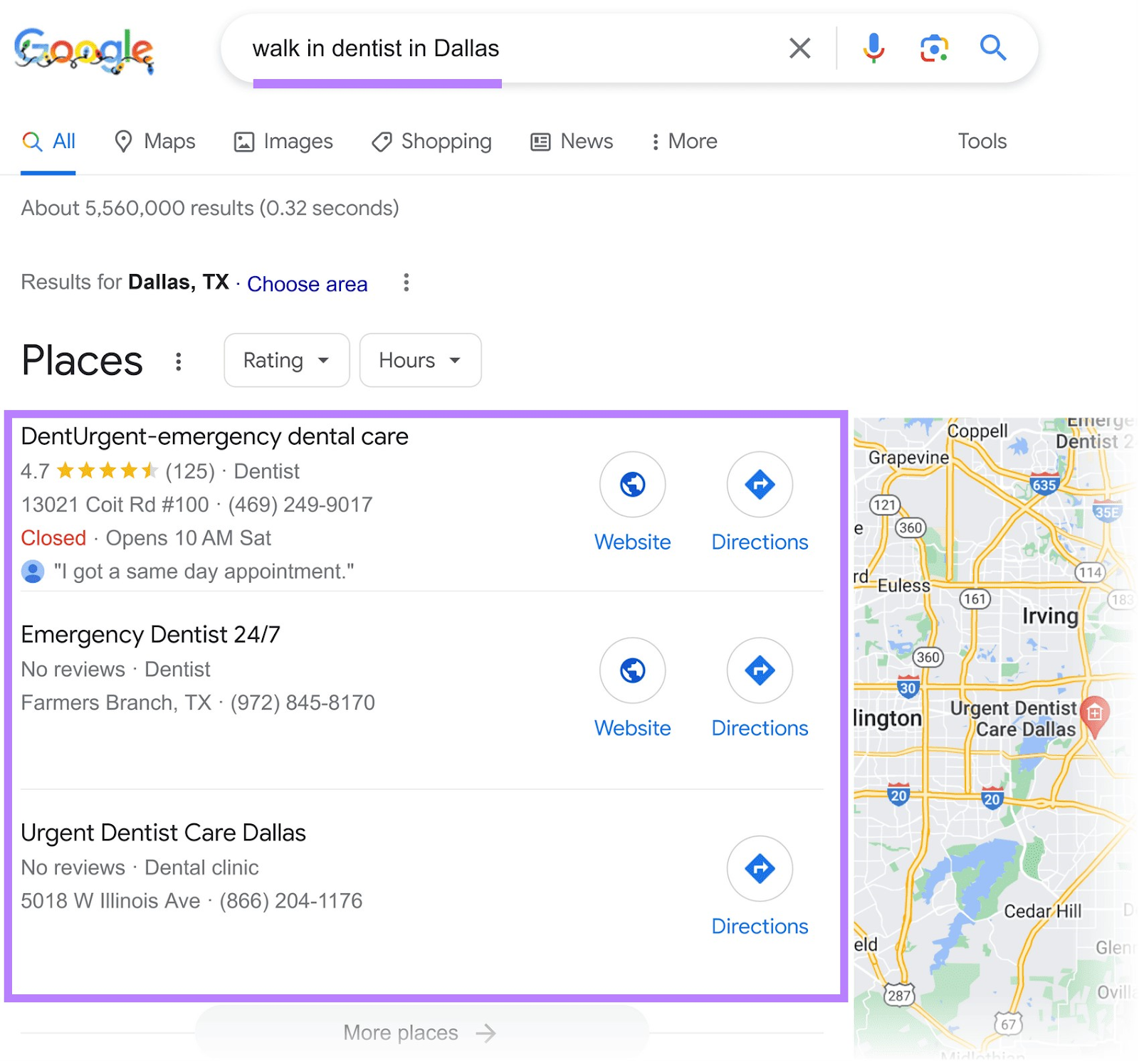
The Local Finder (which appears when users click the local pack):
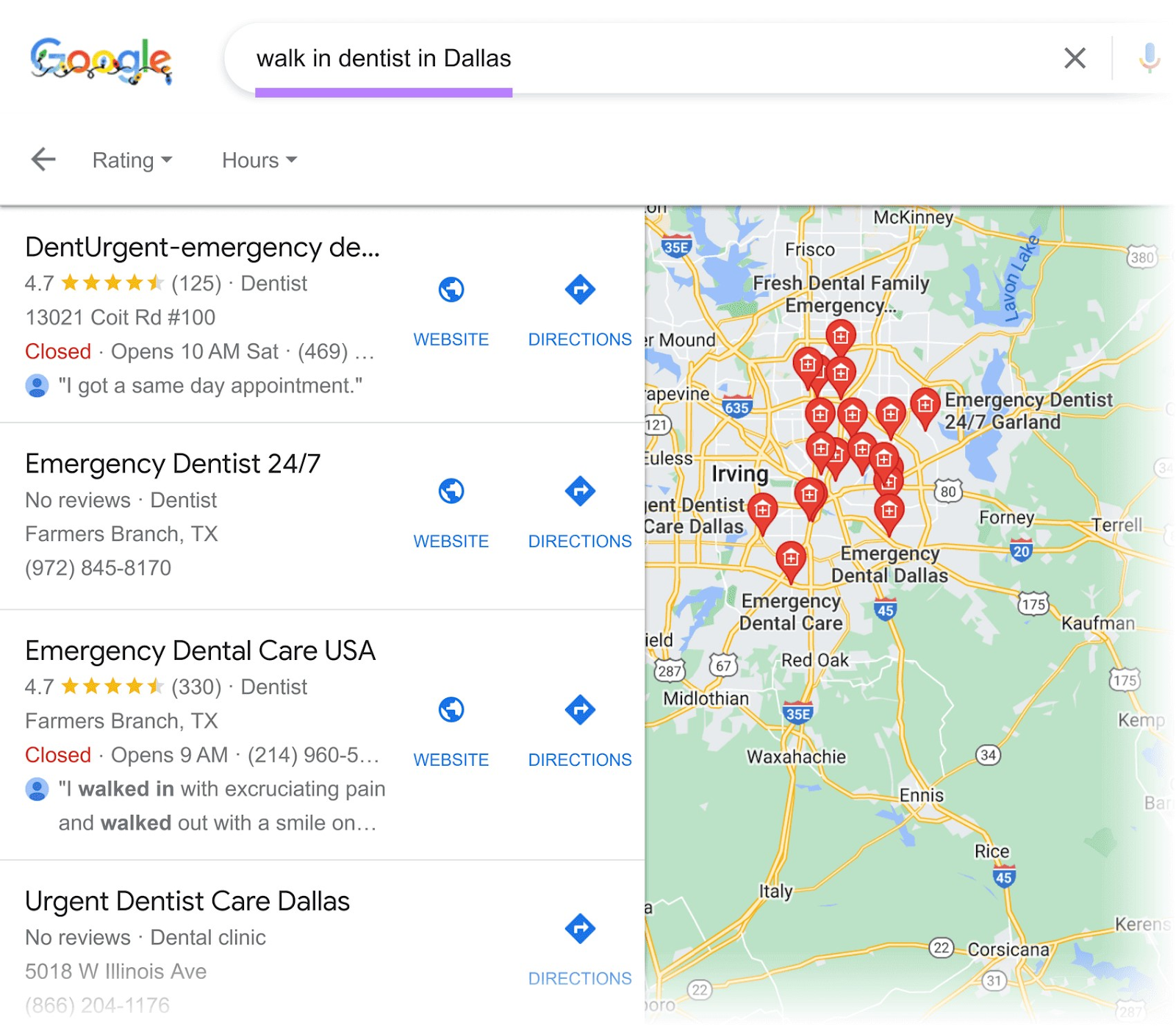
And Google Maps:
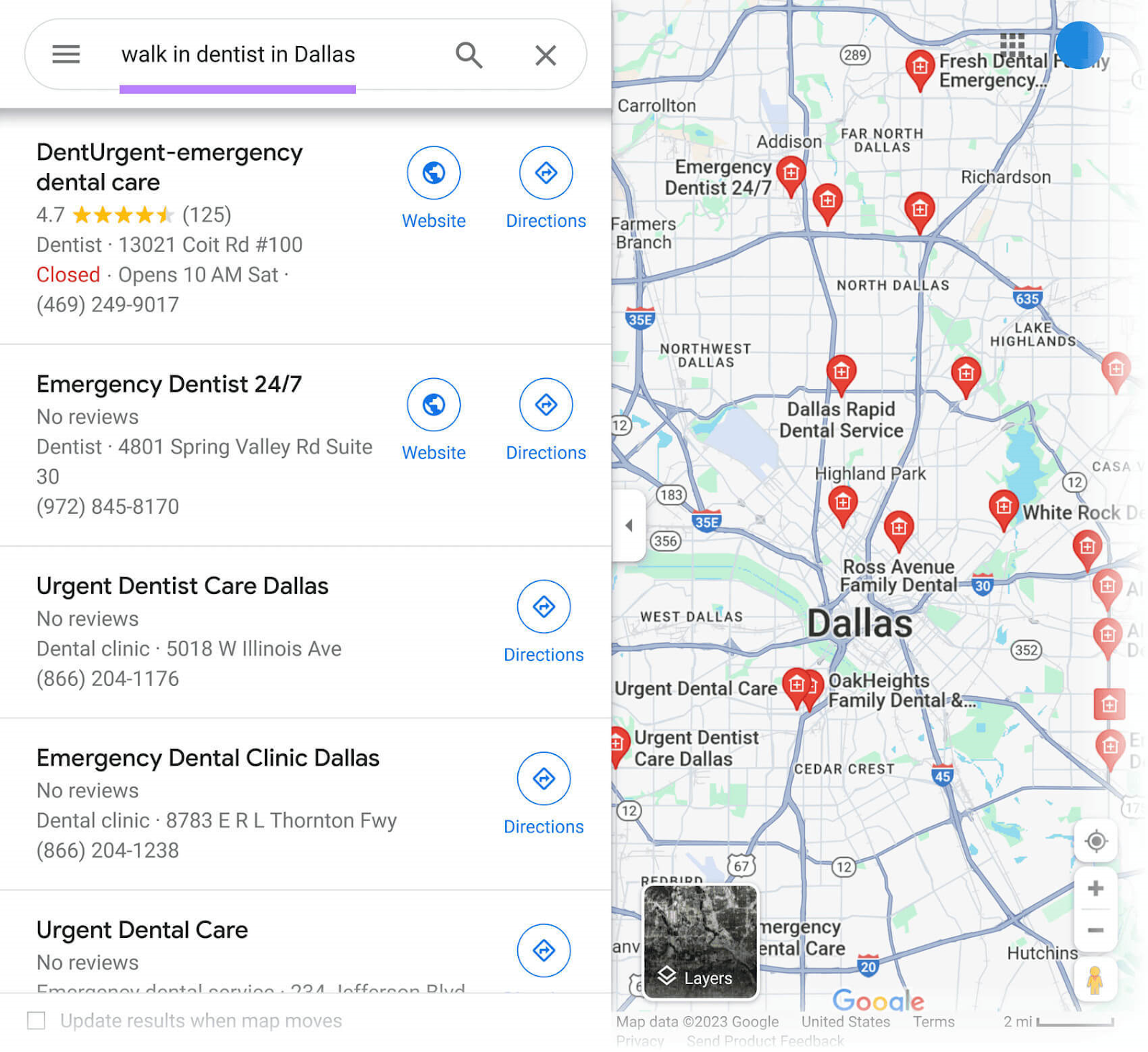
An optimized Business Profile also ensures that prospective patients get the details they need.
For example, your profile should appear when people search your practice’s name. So, it’s crucial that it contains the right phone number, etc.
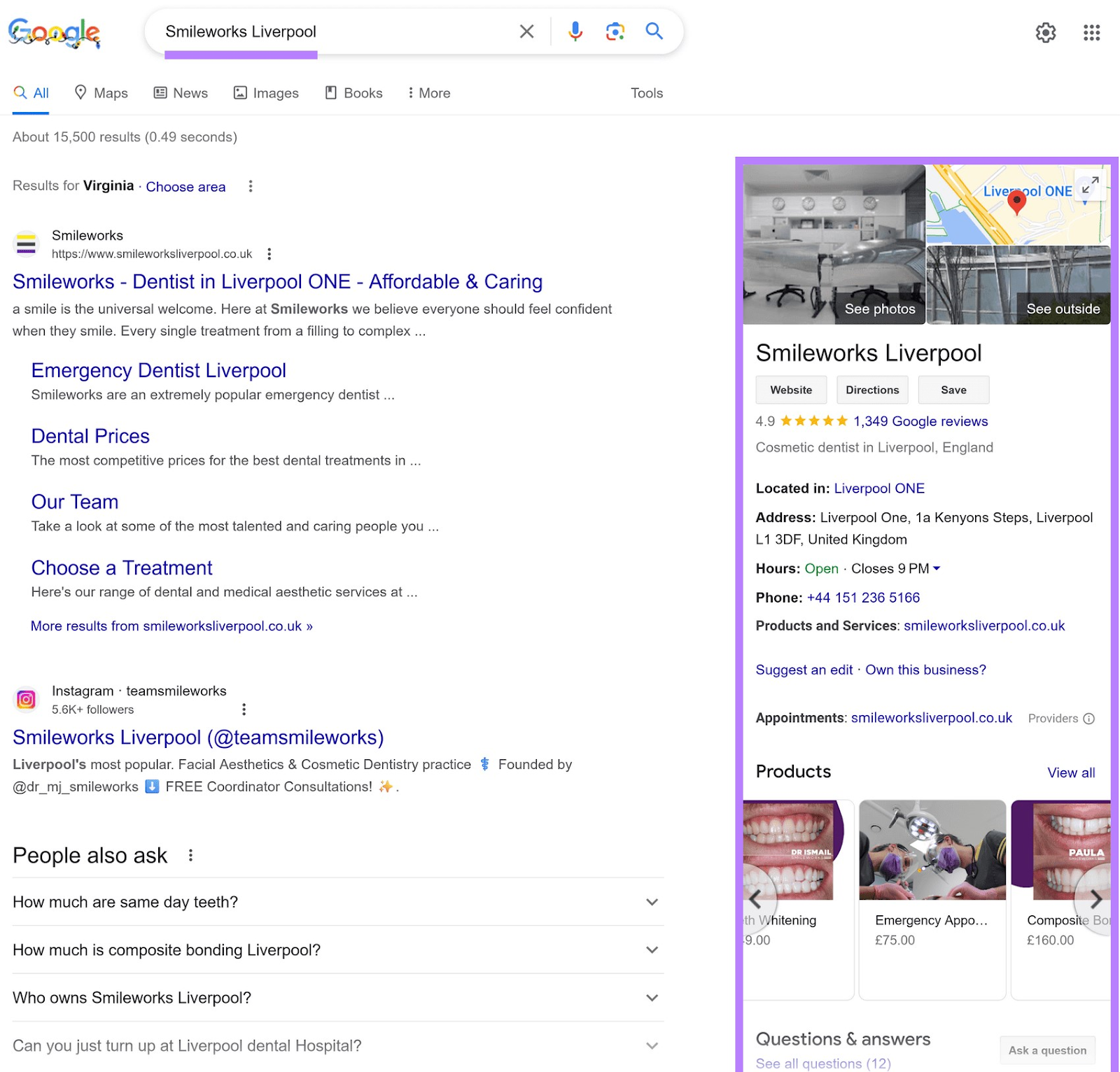
Check out Google’s detailed advice on setting up a healthcare provider Business Profile.
2. List Your Practice in Reputable Online Directories
Listing your dental practice in reputable online directories gives patients more ways to discover your services through search.
For example, ZocDoc and Yelp rank highly for “best dentist near me”:
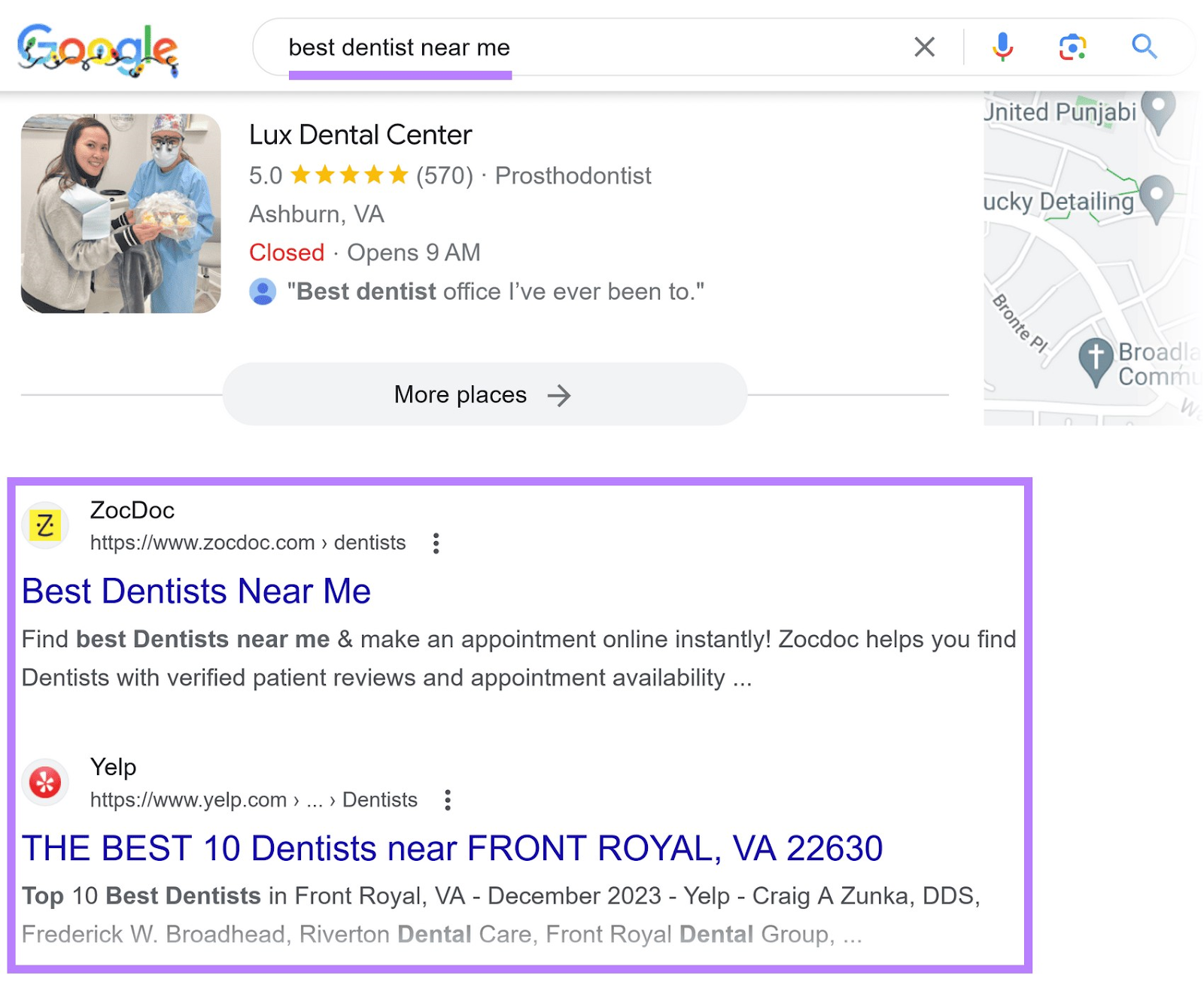
Online citations that include your business’s name, address, and phone number (NAP) also help Google verify your information. And understand your prominence.
This can lead to higher rankings in local search results.
Where appropriate, list your dental practice in the directories offered by reputable:
- Review/booking platforms
- Local business directories
- Dental associations/programs
- Healthcare/insurance providers
To make things easier, use Semrush’s Listing Management tool.
Simply enter your practice name and select the right result from the list.
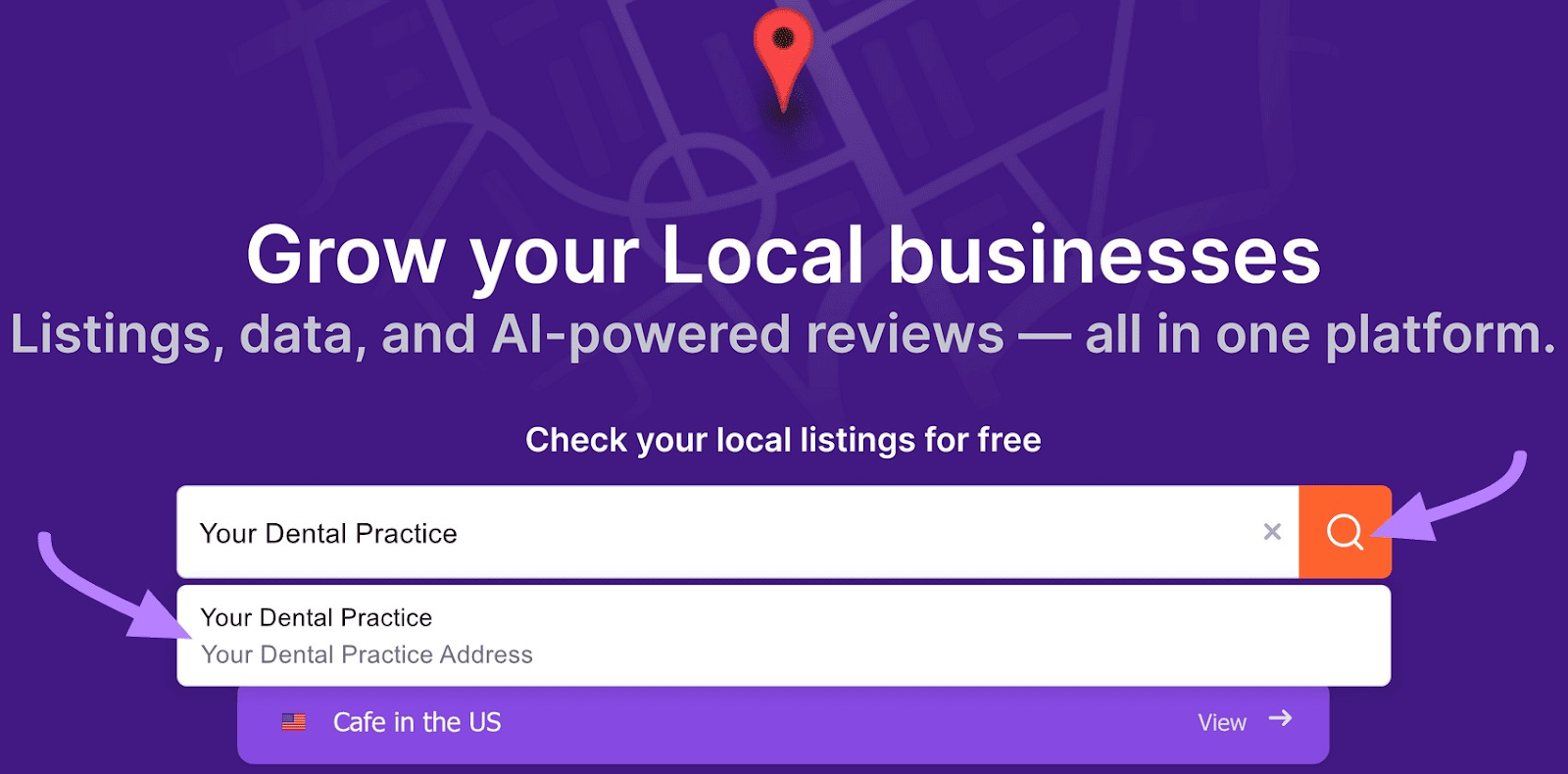
Then, the tool will identify top directories you’re missing out on.
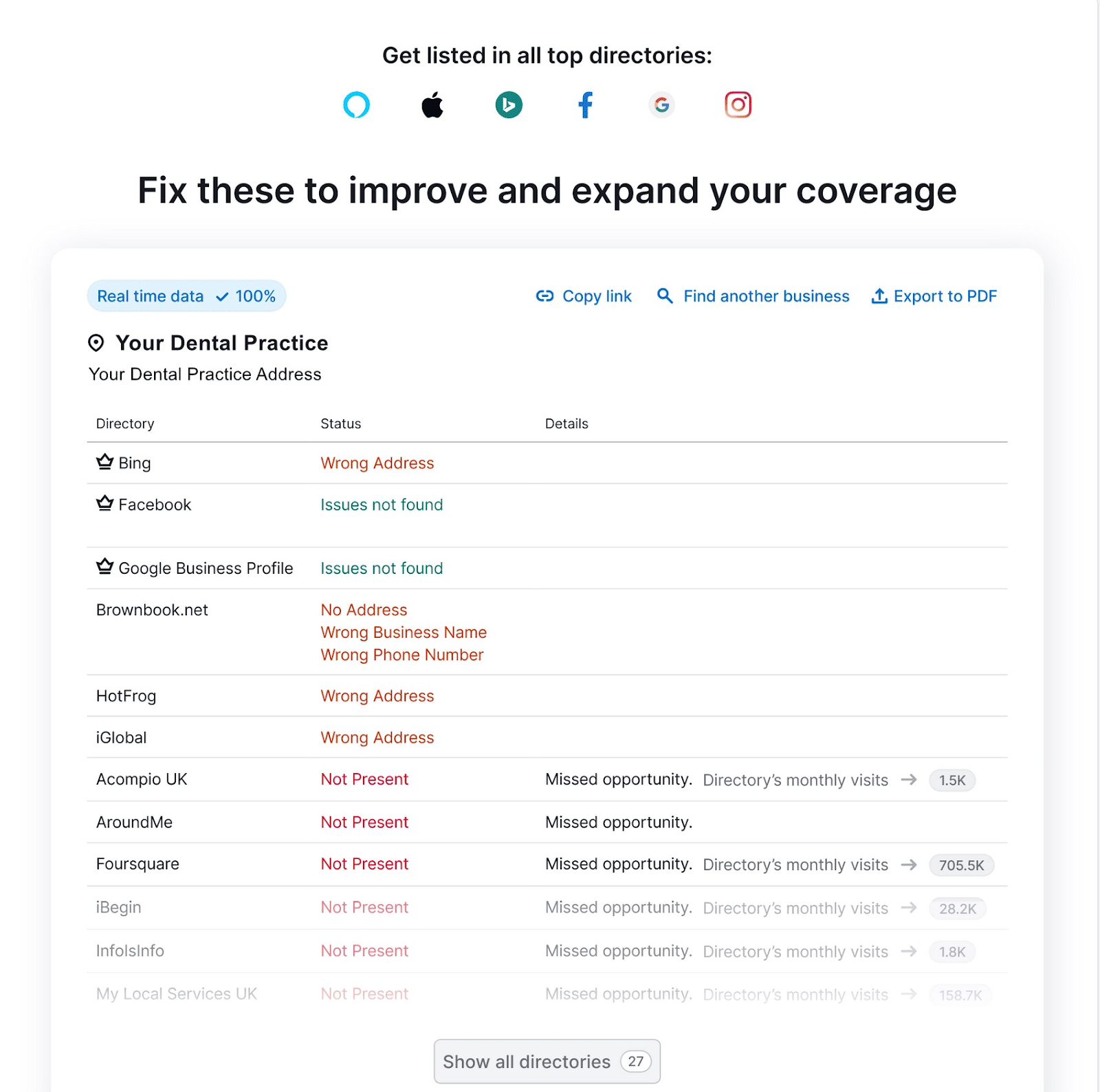
If you purchase a Semrush Local subscription, the tool will automatically submit the business information you provide to every directory in the list. Ensuring your NAP is present and correct across platforms.
3. Encourage Patients to Leave Reviews
The more high ratings your dental practice has on Google, the higher you can rank in local results. And the more inquiries you can expect to receive.
To illustrate, here are the top-ranking places for “dallas dentist”:
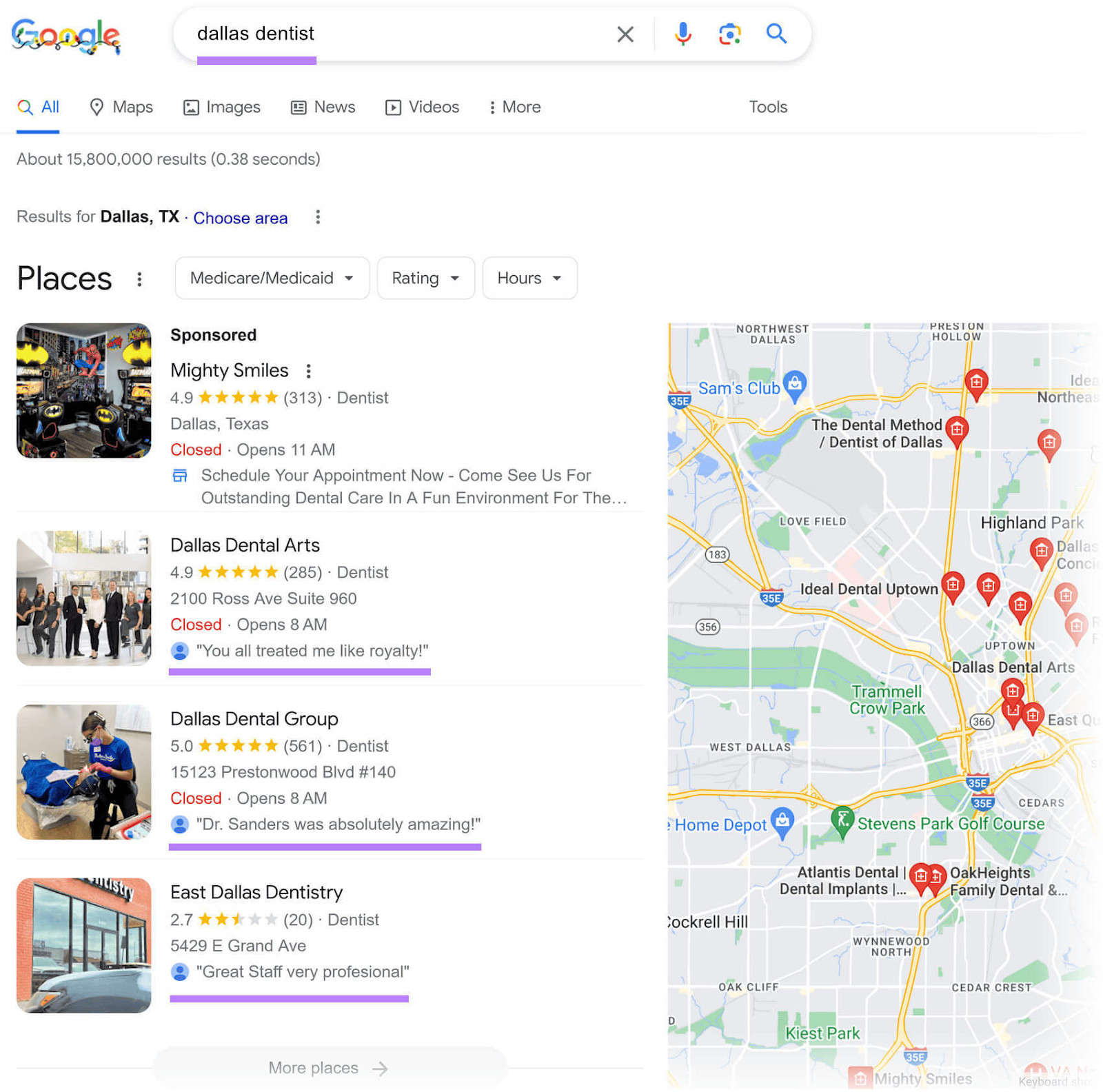
You shouldn’t incentivize patients to leave positive reviews, but you can ask them to leave honest feedback on your Google Business Profile.
Here are some tactics you can try:
- If you have the patient’s permission, send a review request email after each appointment. Make sure to provide a direct link to your Google reviews page.
- Display printables (e.g., posters) that encourage patients to share feedback. Google offers a free customized marketing kit to help you.
- Ask your dental office receptionist to mention reviews as part of their goodbyes. They can even set up a tablet that allows patients to submit reviews there and then.
It’s also important to respond to Google reviews. This proves that you care about patient feedback and allows you to neutralize any negative comments.
Semrush’s Review Management allows you to generate responses using AI.
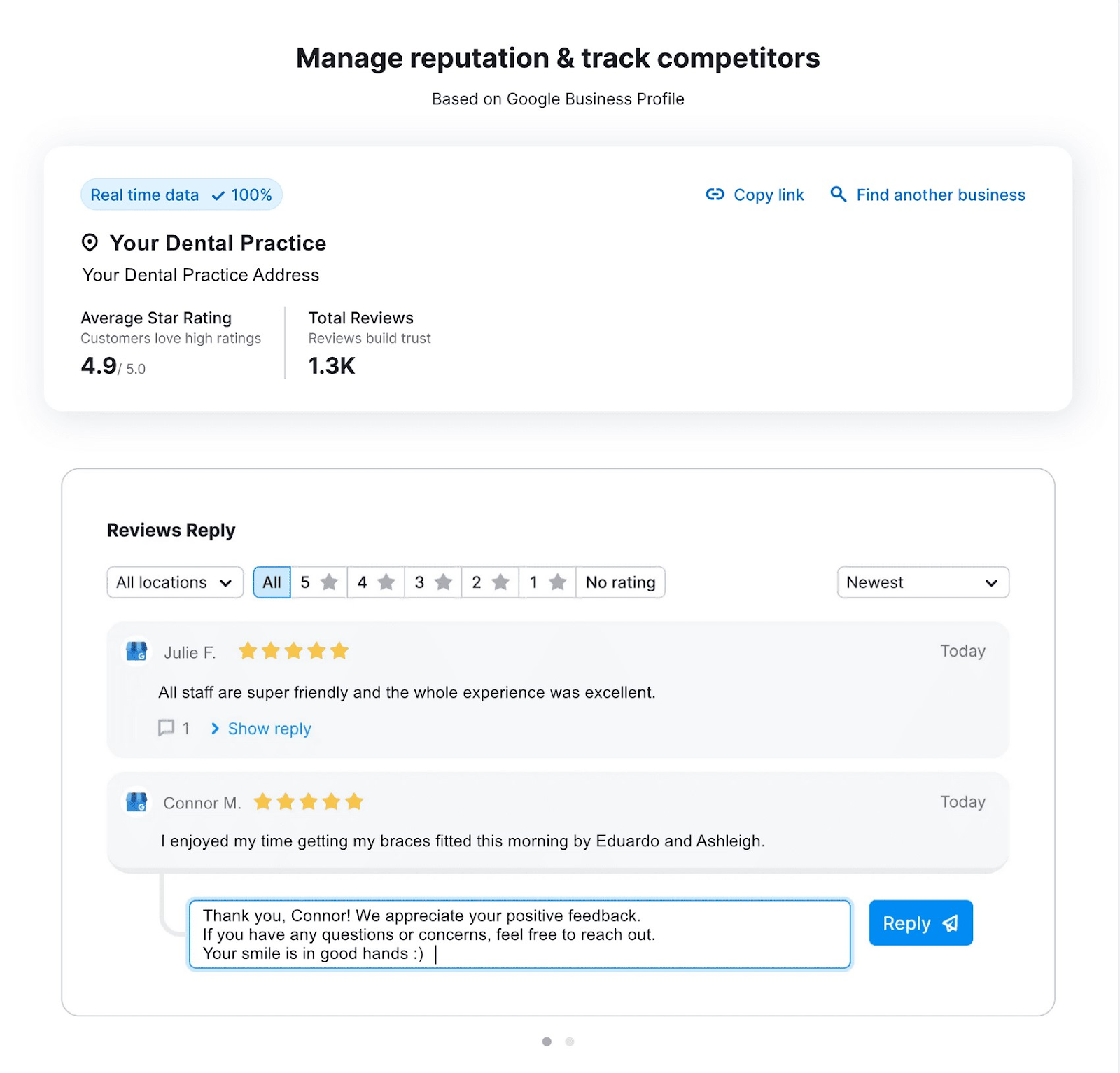
You can also see how your review metrics compare against competitors’.
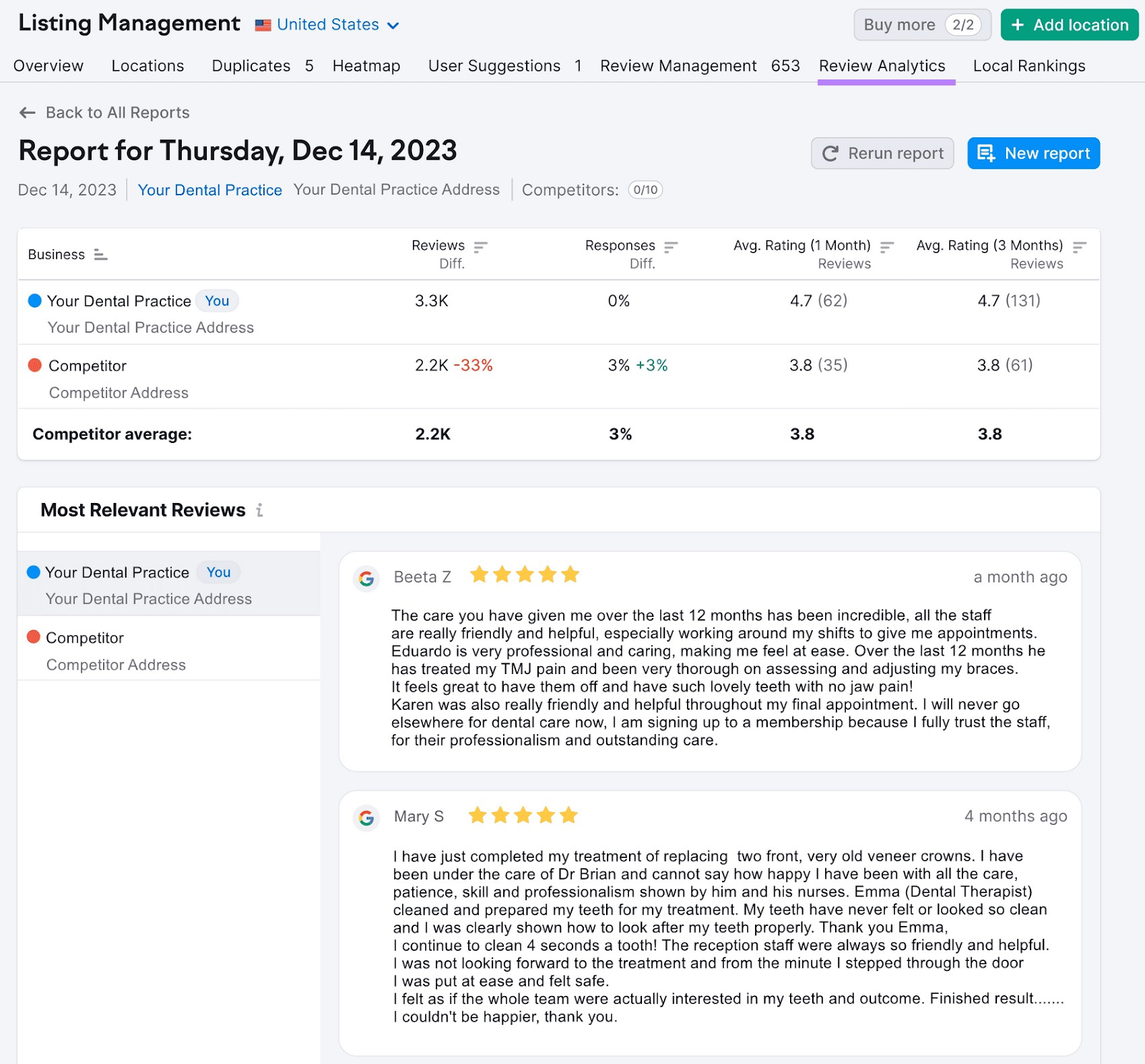
4. Demonstrate Experience, Expertise, Authoritativeness, and Trustworthiness
Google wants to rank sites that demonstrate strong “Experience, Expertise, Authoritativeness, and Trustworthiness” (E-E-A-T).
Especially when it comes to “Your Money or Your Life” (YMYL) topics like dentistry, which can have a serious impact on users’ health.
Here are some quick tips for success with your dental website SEO:
- Display your practice’s accreditations (e.g., board certifications)
- Provide information about your dentists and their qualifications
- Publish quality content that showcases your topical expertise
- Ensure information is professionally reviewed and credibly sourced
You can also build a strong reputation by:
- Encouraging patients to leave reviews on third-party platforms (like Google)
- Securing favorable media coverage and links on authoritative websites
- Getting your business listed on high-quality healthcare directories
For example, Dallas Dental displays awards, accreditations, and Google reviews on its homepage:
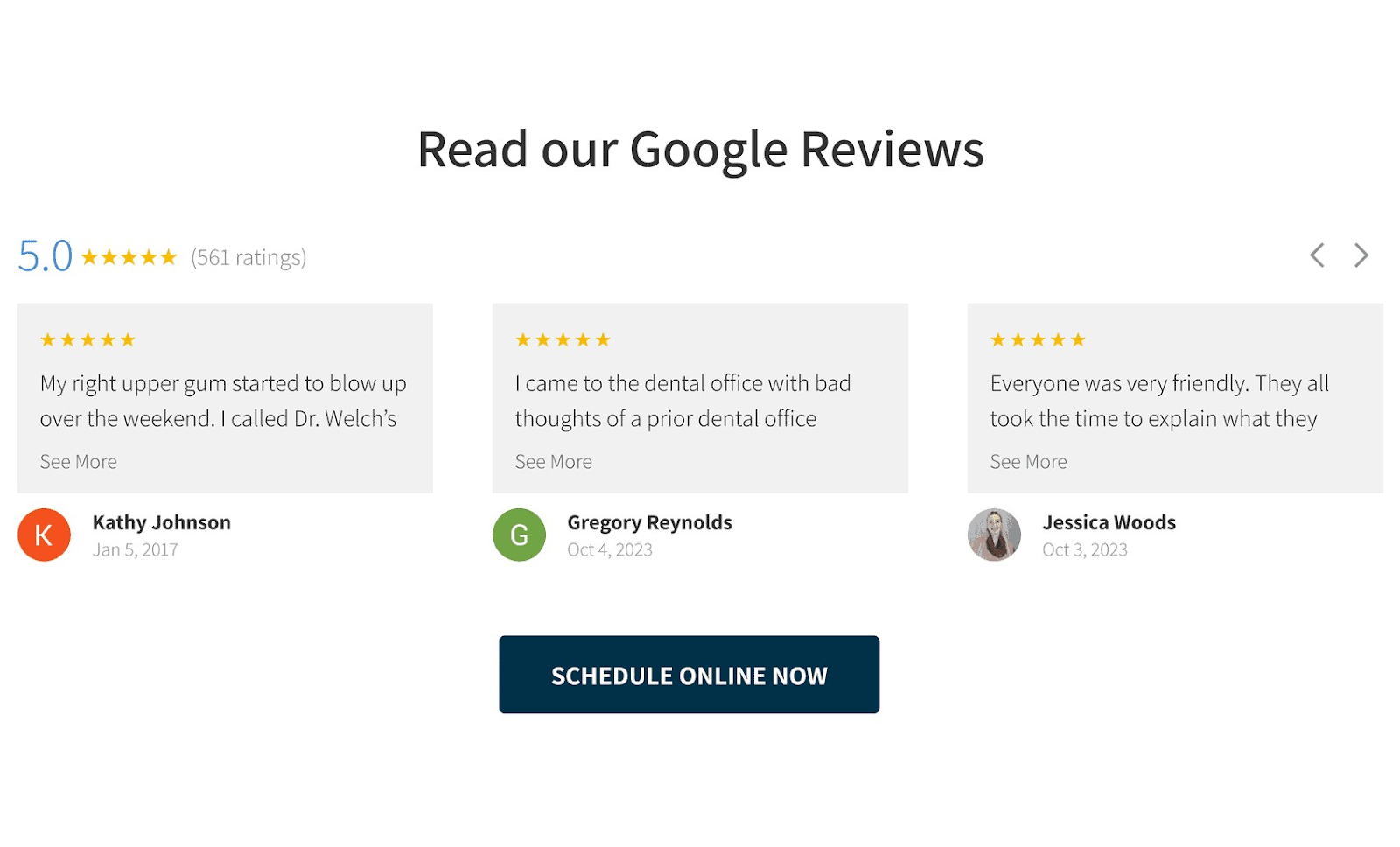
And provides detailed bios for its staff:
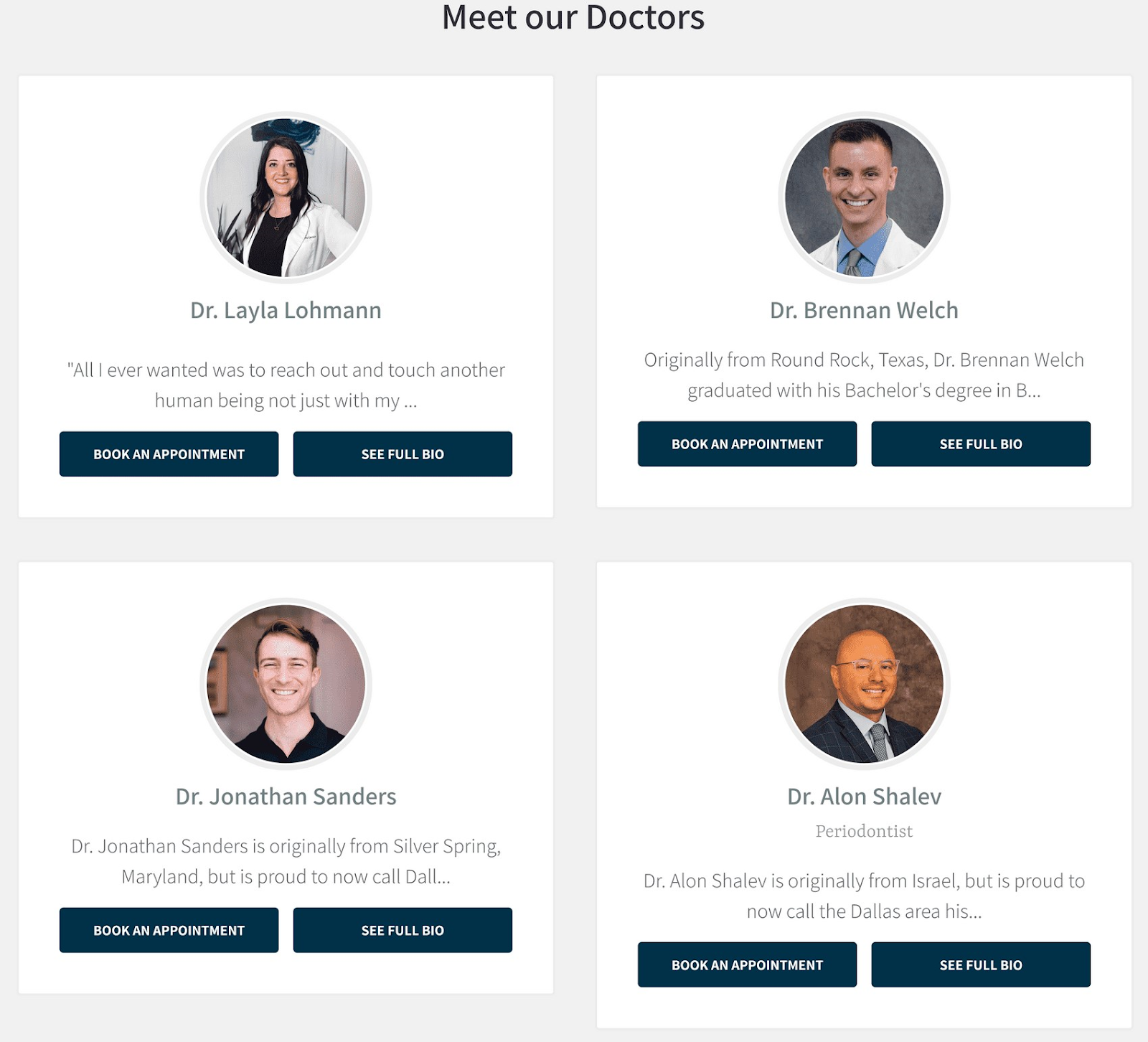
5. Perform Keyword Research and Local Keyword Research
Keyword research is the process of finding relevant queries people type into search engines.
Local keyword research is the process of finding what people type when they’re searching for products, services, or amenities in their area (e.g., an emergency dentist).
Both processes are important when doing SEO for dental practices.
Because adding keywords to your website content and Business Profile can help them rank higher in associated search results—and attract more clicks from users.
Get started with Semrush’s Keyword Magic Tool.
Enter a word or phrase to base your research around, choose your country, and click “Search.”
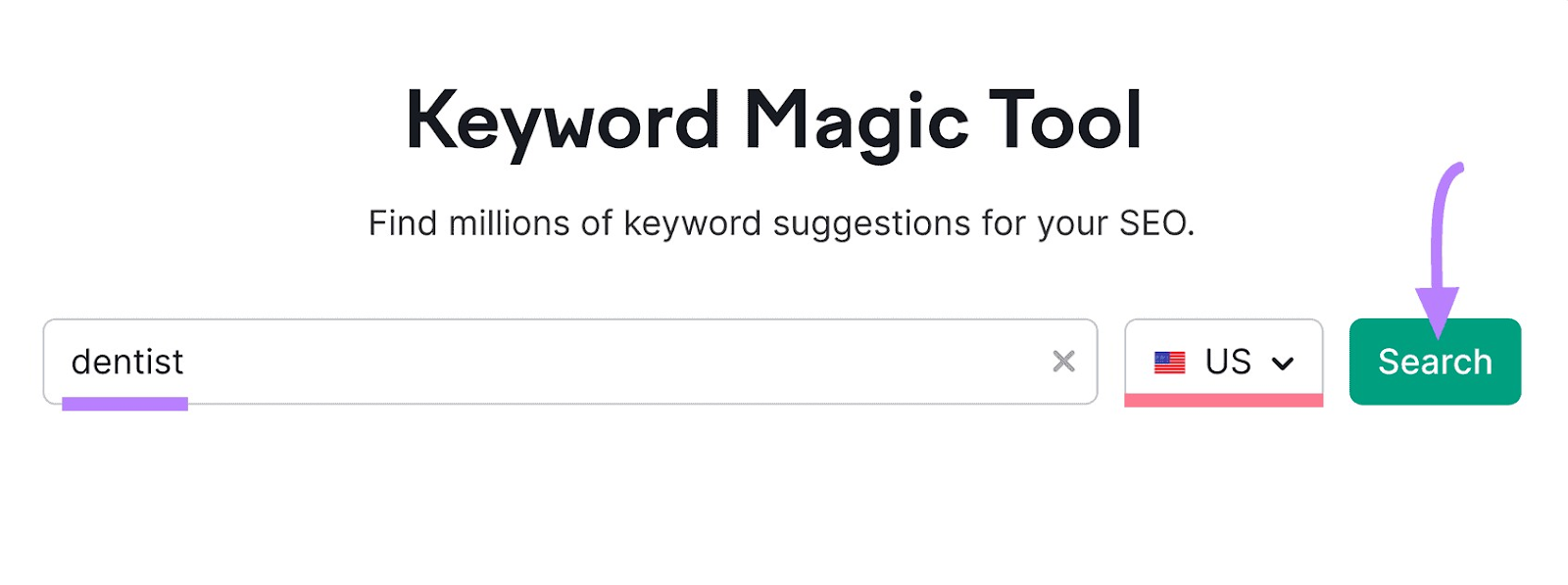
The tool provides the following data for each keyword result:
- Intent: The search intent category, which indicates what type of result the user wants
- Volume: The keyword search volume or average number of monthly searches
- KD %: The keyword difficulty score out of 100, which measures how hard it is to rank highly
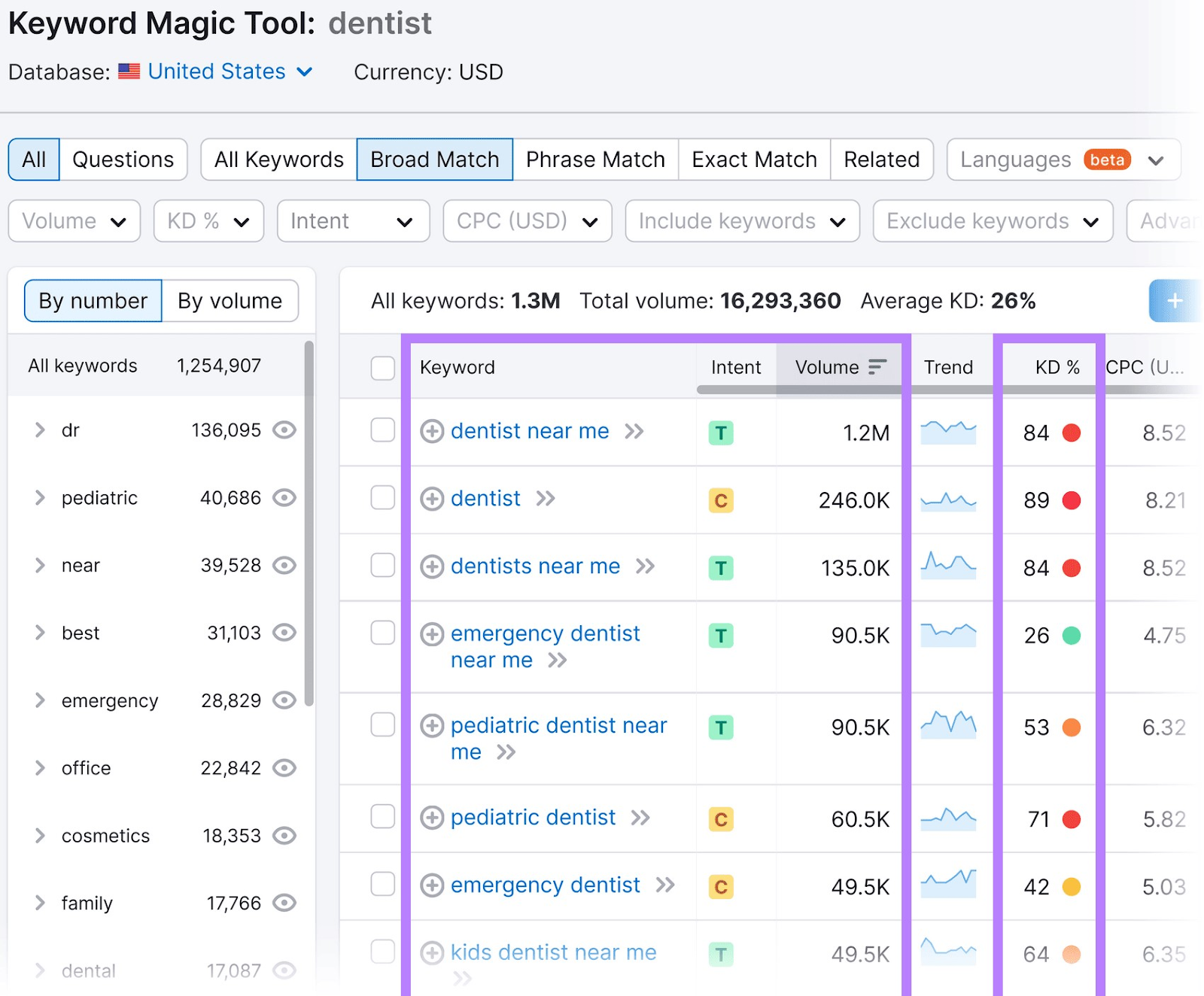
To see which keywords trigger local results, go to “Advanced filters” > “SERP Features.”
Then, check the box next to “Local pack” and click “Apply.”
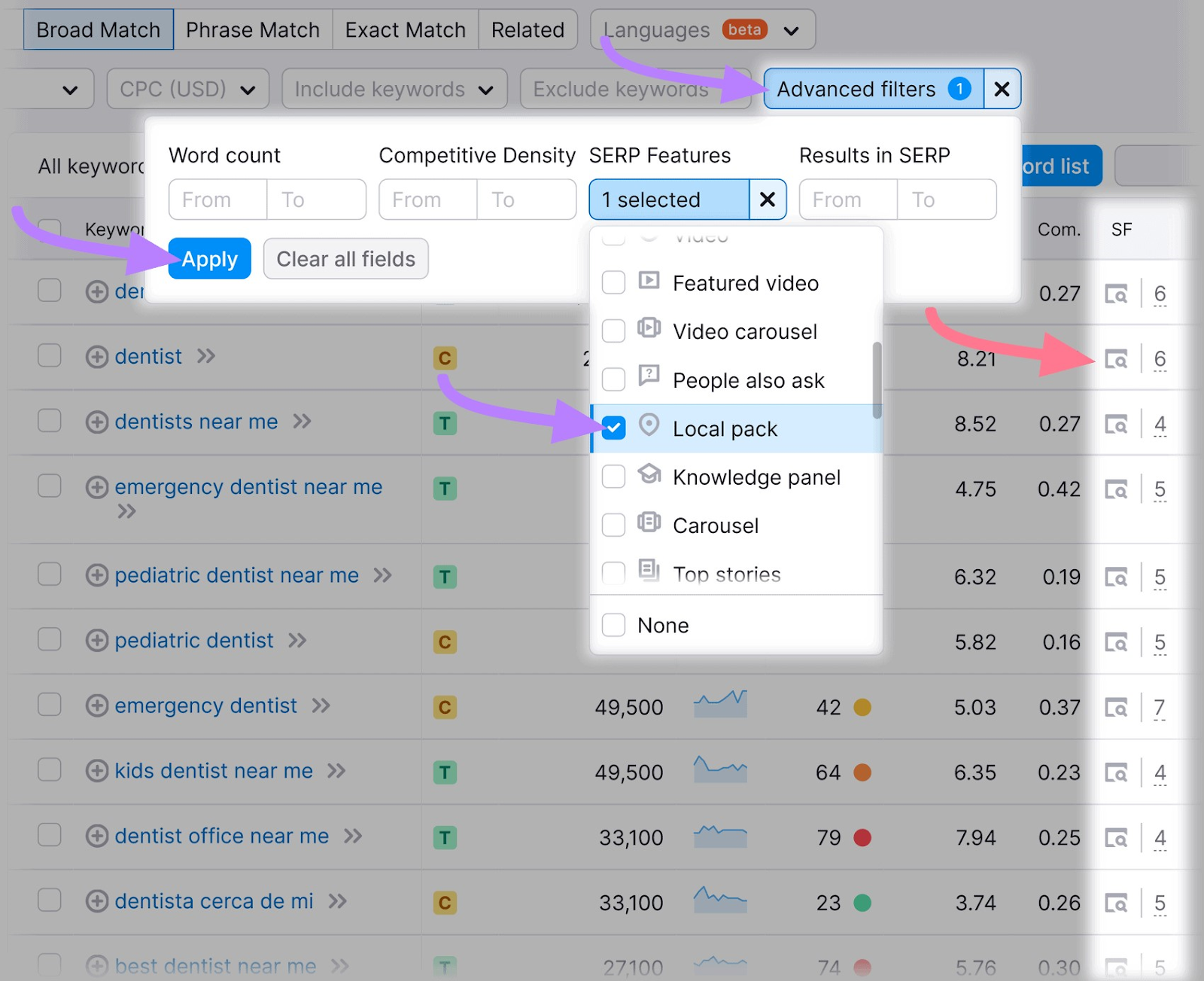
To see the search engine results page (SERP) for any keyword, click the icon in the “SF” column.
This lets you conduct SERP analysis—i.e., check the user intent behind the query and see what competition you’re up against.
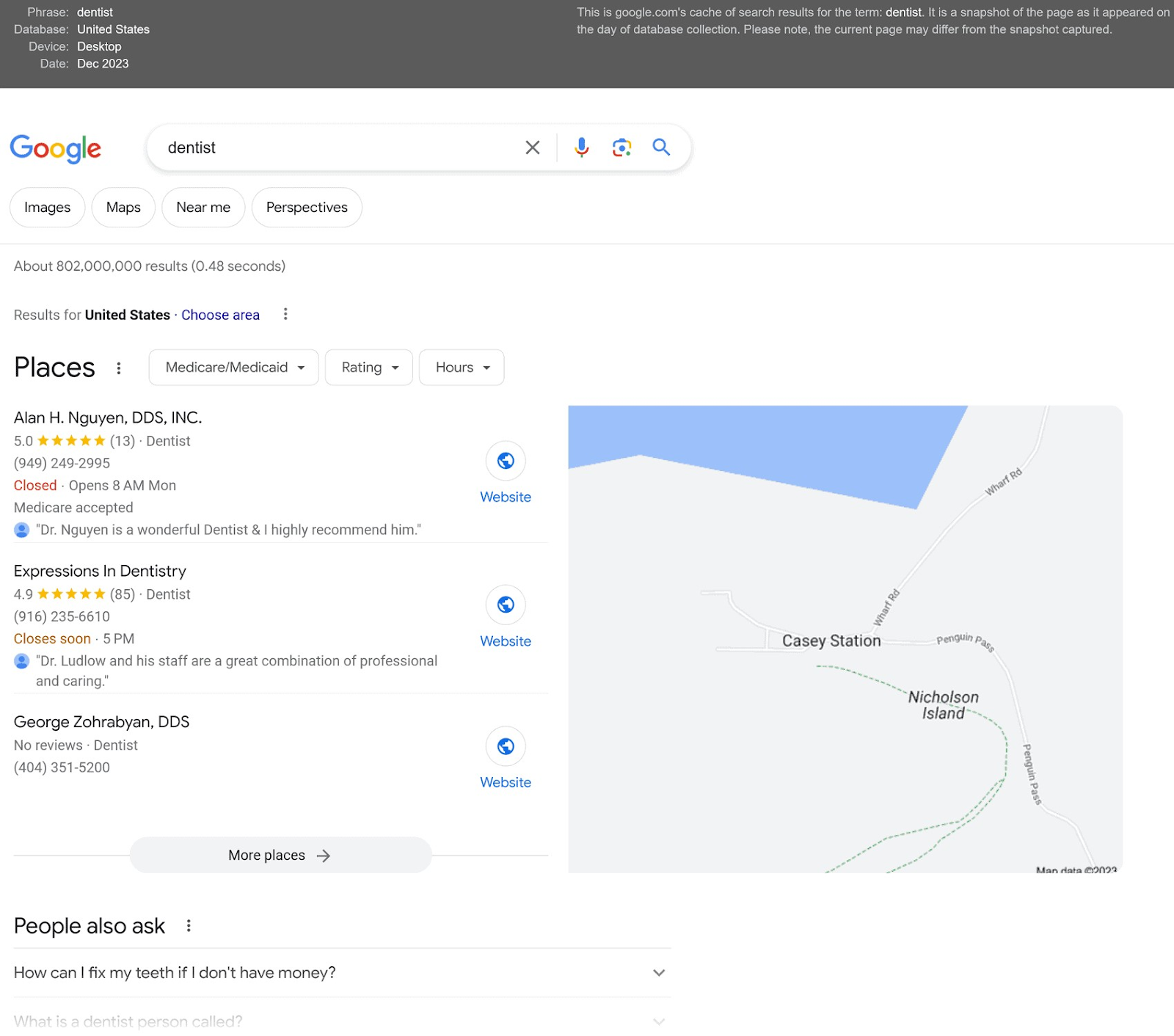
To learn more about choosing target keywords (terms you want to rank for), check out our guide to keyword strategy.
6. Optimize Your Webpages with On-Page SEO
On-page SEO is the process of optimizing a webpage so it ranks higher for relevant keywords and encourages more visitors to take a desired action (e.g., book an appointment).
Here are some top tips:
- Add your primary keyword (the main keyword you want to rank for) to the title tag and meta description (which can appear in search results), H1 tag (the main heading on your page), and first paragraph of body content
- Naturally incorporate relevant keywords throughout your body content
- Use semantic HTML to help Google understand your page’s contents
- Build internal links between associated pages on your site
To ensure you don’t miss anything important, follow our on-page SEO checklist:
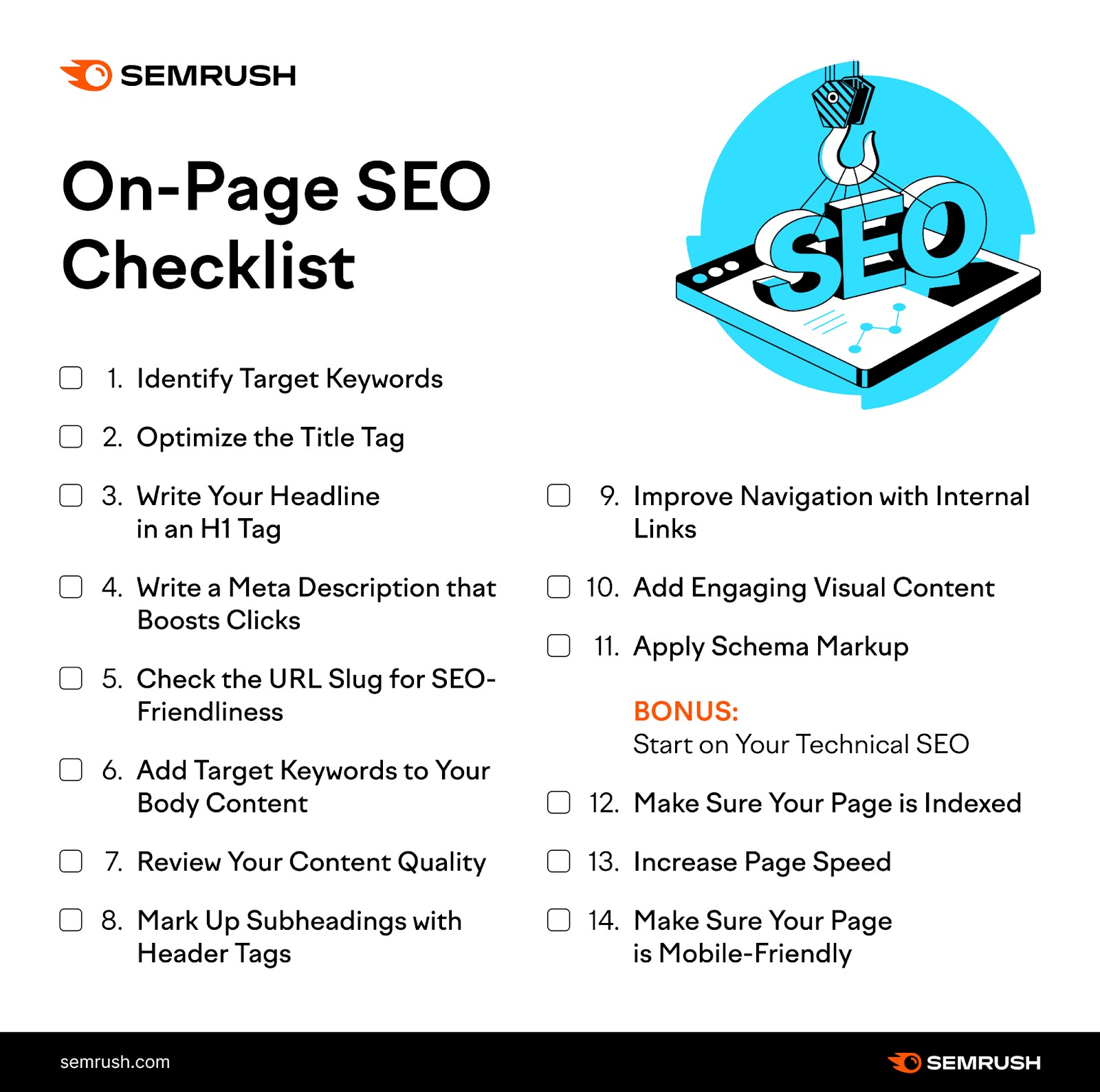
Or use Semrush’s On Page SEO Checker.
It compares your pages against their top-ranking counterparts to provide a list of optimization ideas.
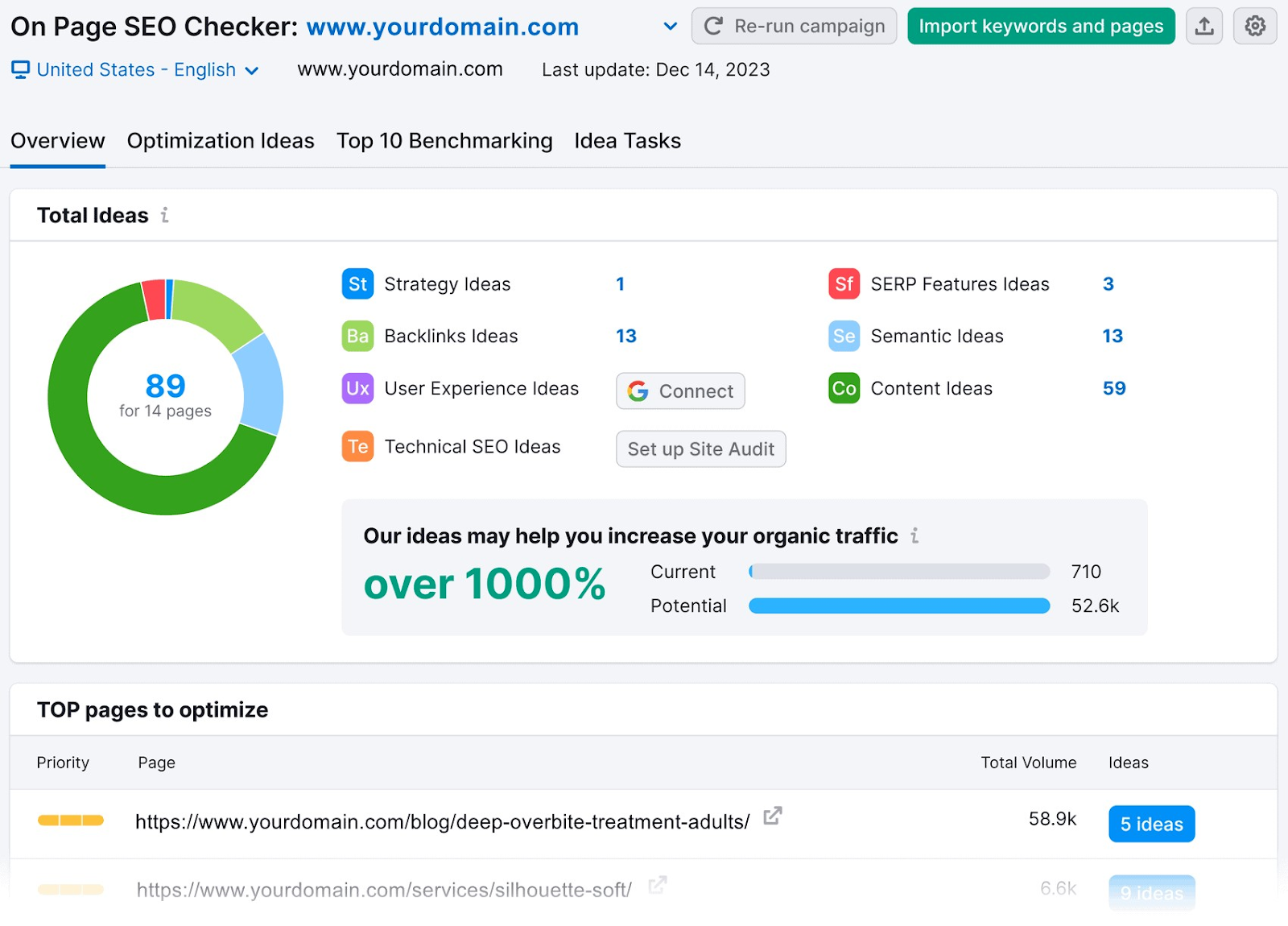
7. Use Structured Data on Your Website
Using structured data (or schema markup) on your site makes it eligible for rich snippets—enriched search results on Google. Which can attract more clicks than standard results.
For example, this result features an average star rating. Because Garden State Dental uses review schema on its page.
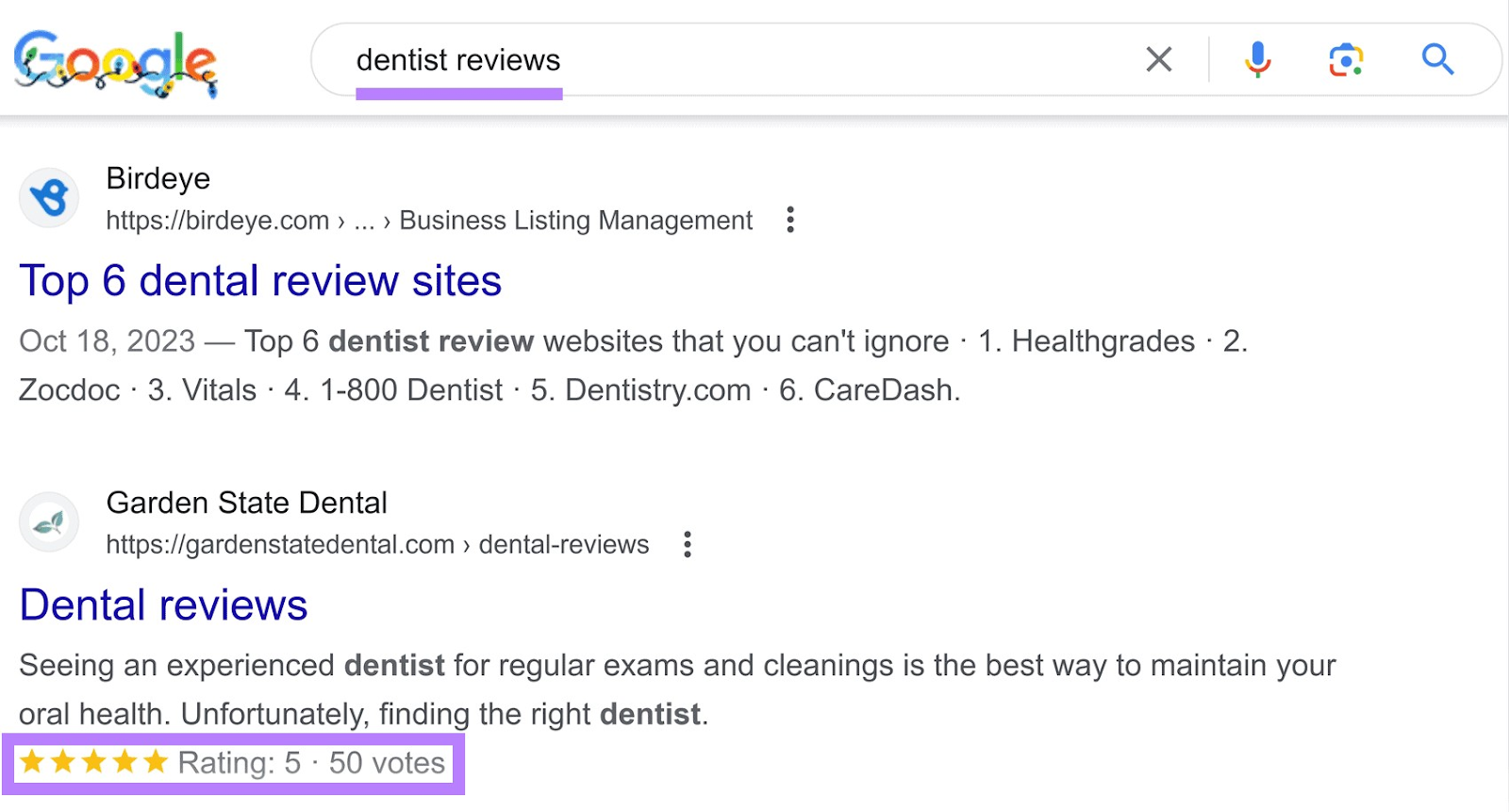
You can use structured data to confirm your dental office’s:
- Medical specialty
- Forms of payment accepted
- Insurance accepted
- Hours of operation
- Slogan
- Awards
- Address
- Phone number
- Languages spoken
And much more.
Check out the full list of schema properties for dentists on the Schema.org website.
If you need help implementing the markup, try Google’s Structured Data Markup Helper. Or speak with a website developer.
8. Conduct a Technical SEO Audit
Technical SEO involves optimizing technical aspects of your site (such as speed and security) with the aim of ranking higher in search engines and providing a better user experience.
When doing SEO for dentists, improvements should ultimately translate into more patients and bookings.
To see where your site falls short, conduct a technical SEO audit.
Semrush’s Site Audit tool makes it easy.
Follow the setup instructions, then navigate to the “Issues” report. To find a list of errors, warnings, and notices.
Which may include:
- Invalid structured data
- Missing title tags
- Expired security certificates
- Slow page speeds
- Broken links

Click “Why and how to fix it” for more insight into any issue.
Then, click “Send to” to create a task in the Semrush CRM, Trello, or Zapier. (Assuming you’ve set up the connection first.)
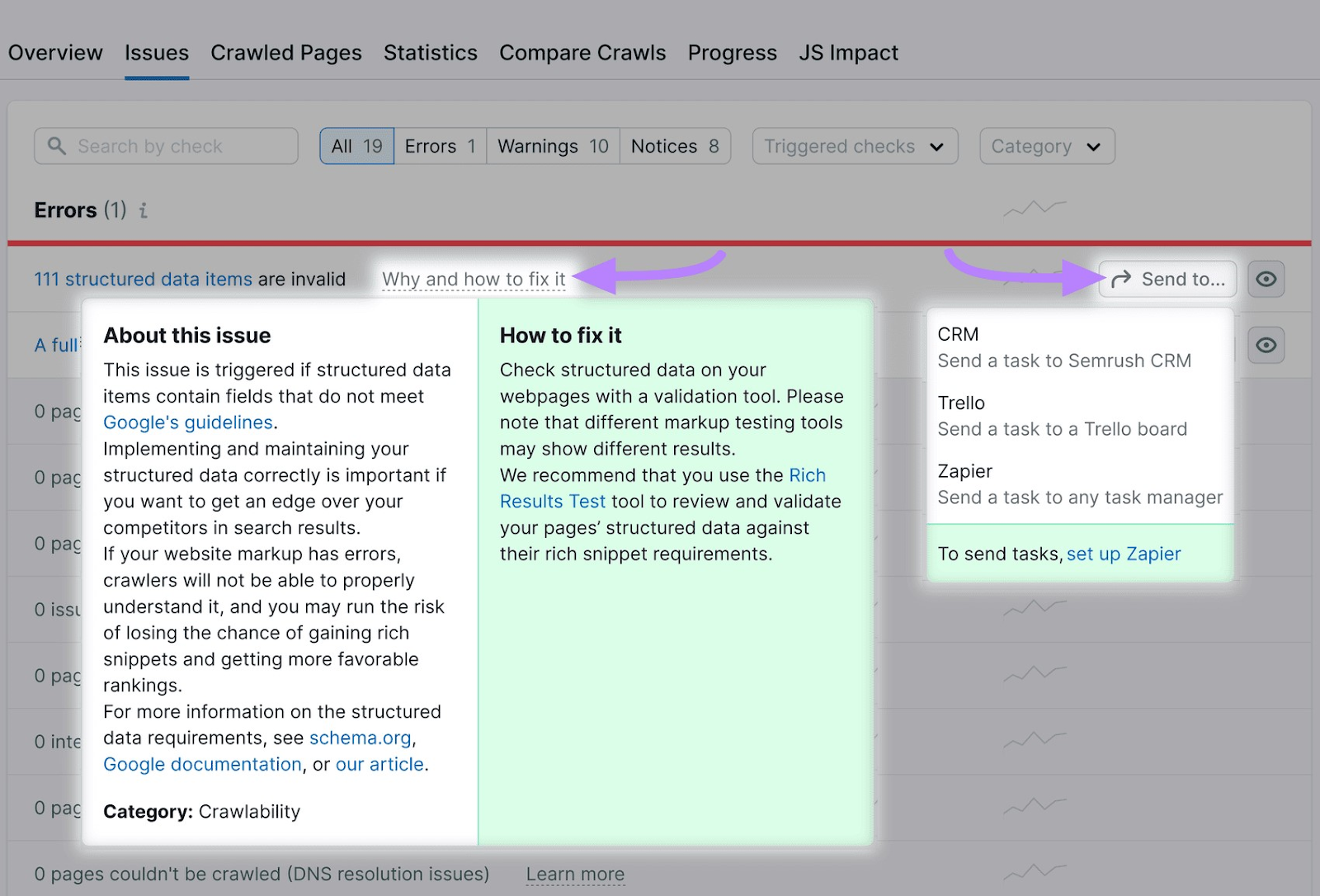
Make sure to rerun the audit after making improvements. So you can ensure they’ve been implemented properly.
9. Build Backlinks from High-Quality Websites
Backlinks are links to your site from other domains.
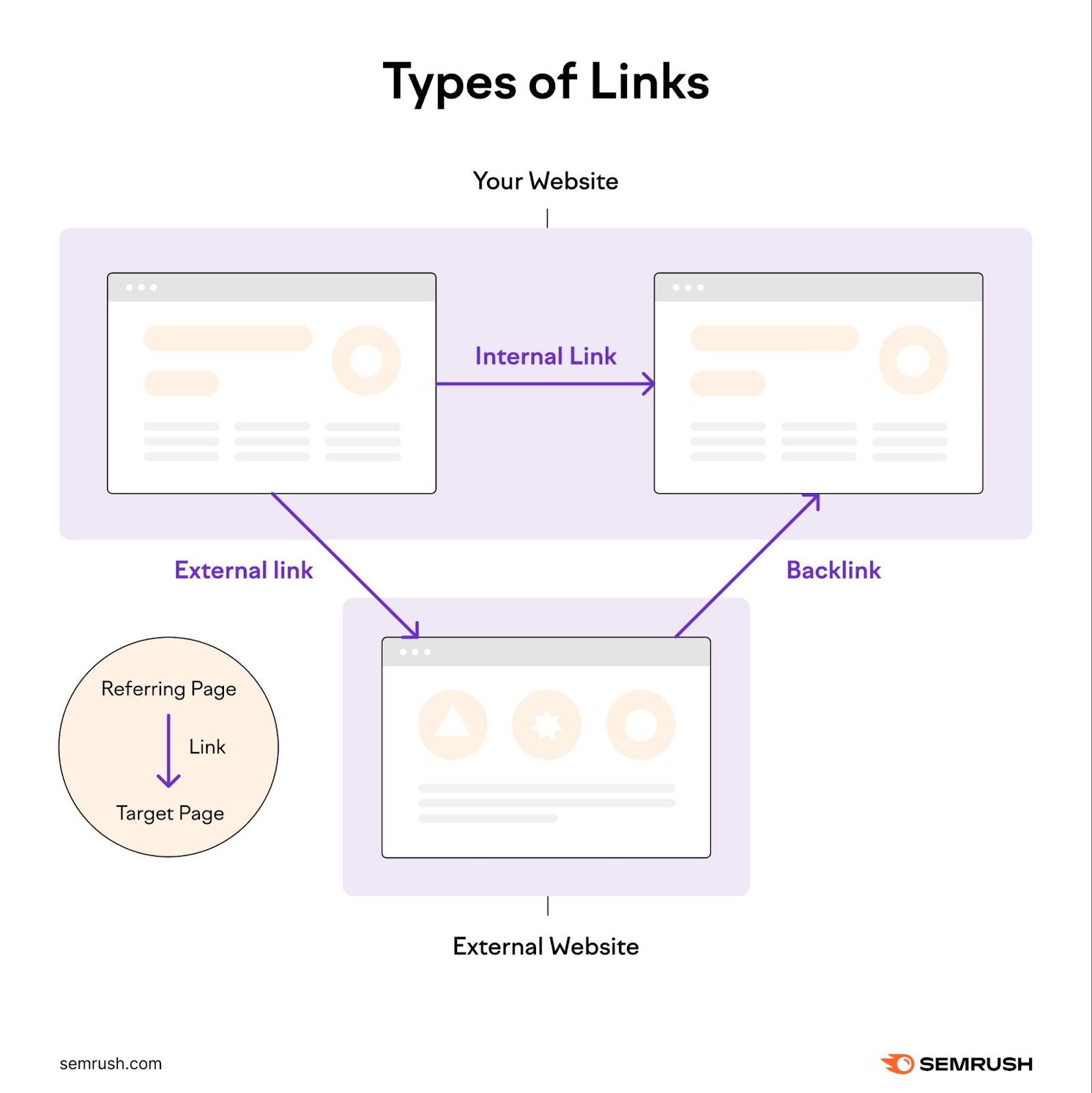
Google treats certain types like votes of confidence, so they can contribute to higher SEO rankings. Plus, they can drive referral traffic to your site.
Your site may accrue backlinks naturally, but you can also try link building.
Here are some link building tactics you can try:
- Create link bait: Publish content that sites in your industry might want to share with their audience (e.g., research studies and useful videos)
- Skyscraper technique: Identify rival content that gets lots of links, create a better version, then convince publishers to link to your version instead
- Broken link building: Find competitor backlinks that don’t work properly and encourage the admin to fix them by linking to your site instead
Make sure to follow Google’s link spam guidelines. Otherwise, you may build harmful backlinks that can be toxic to your SEO efforts.
And focus your efforts on relevant, high-quality sites. Google tends to ignore backlinks that appear unnatural or untrustworthy.
You can find good link building prospects with Semrush’s Link Building Tool.
It analyzes your target keywords and competitors to find the best backlink opportunities.
Each opportunity rating is based on 50+ factors. Including the prospect site’s Authority Score (AS). Which measures domain or webpage authority out of 100.
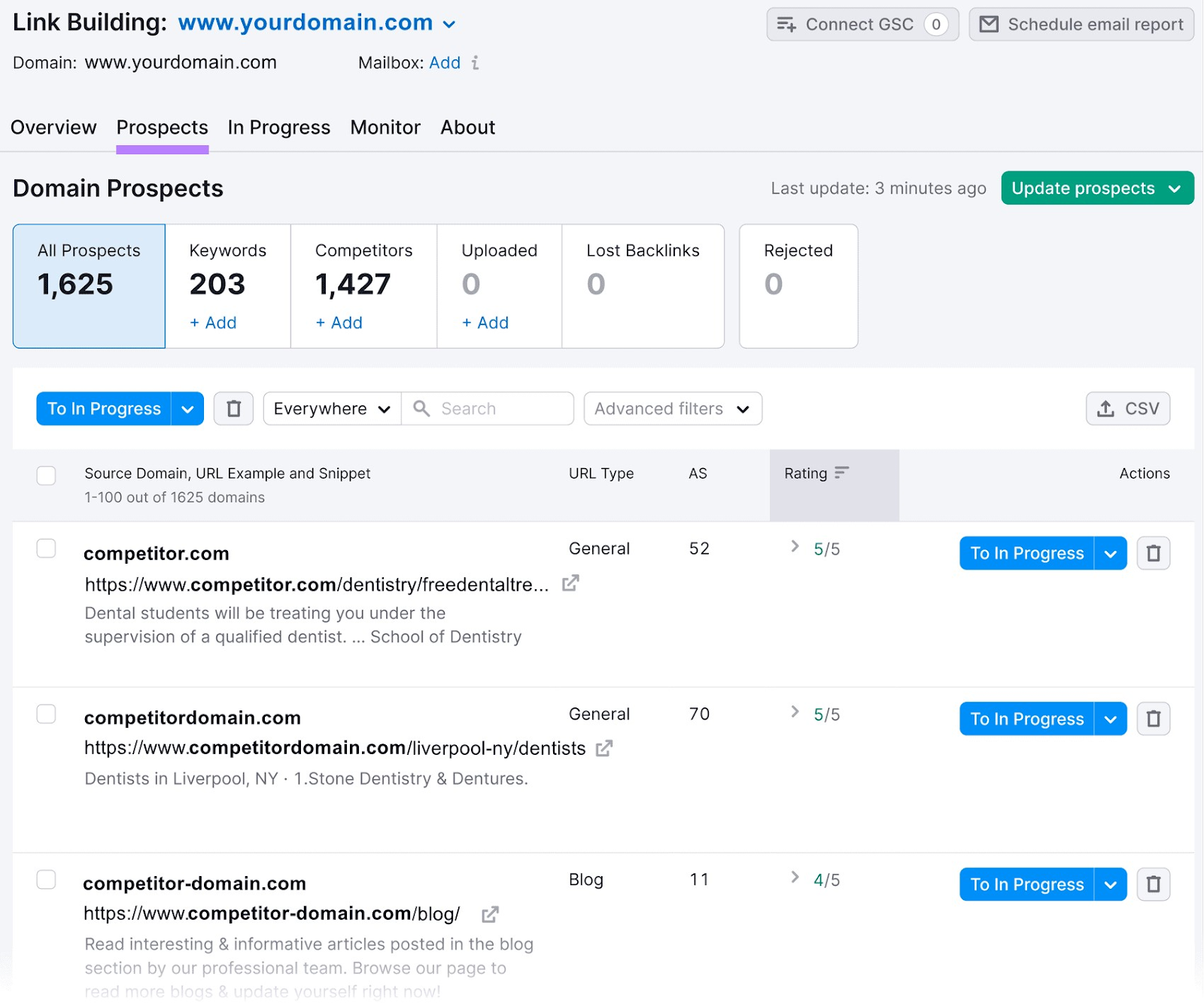
The tool also makes it easy to send outreach emails to your prospects and track their progress.
10. Measure Your Dental SEO Metrics
Before you jump into dental SEO, collect some key metrics.
That way, you can identify strengths and weaknesses in your current performance and measure your progress over time. And tailor your SEO strategy to your practice’s changing needs.
First, set up Google Analytics and Google Search Console.
These free tools allow you to track metrics like:
- Organic traffic: The number of website visits that come from unpaid search engine results
- Conversion rate: The percentage of visitors who perform a desired action or behavior
- Ranking keywords: See which keywords your website appears for, along with your average ranking position and click-through rate (CTR)
For further insights into your SEO results, use Semrush’s Position Tracking tool.
Among many other things, it allows you to:
- Track your rankings in specific locations (e.g., your city or state)
- Reference keyword metrics (like volume and difficulty)
- Monitor your overall search visibility over time
- Get alerts when you gain or lose rankings
- See which keywords trigger local results (and whether your listing appears)
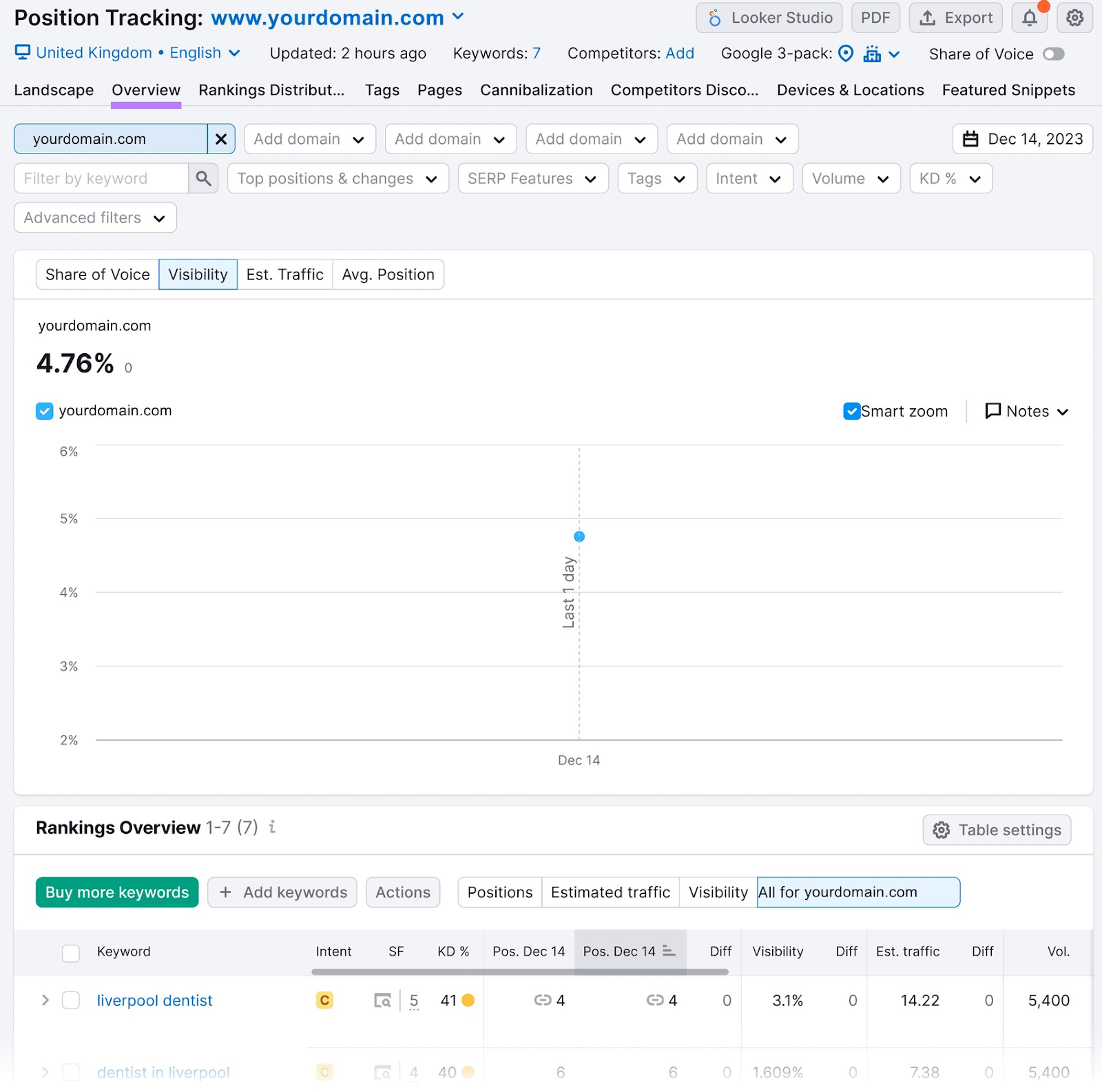
If you want to focus on your Google Business Profile’s performance, use the Listing Management tool.
You can track its rankings in the Local Finder. And see where it ranks in Google Maps, based on nearby search locations.
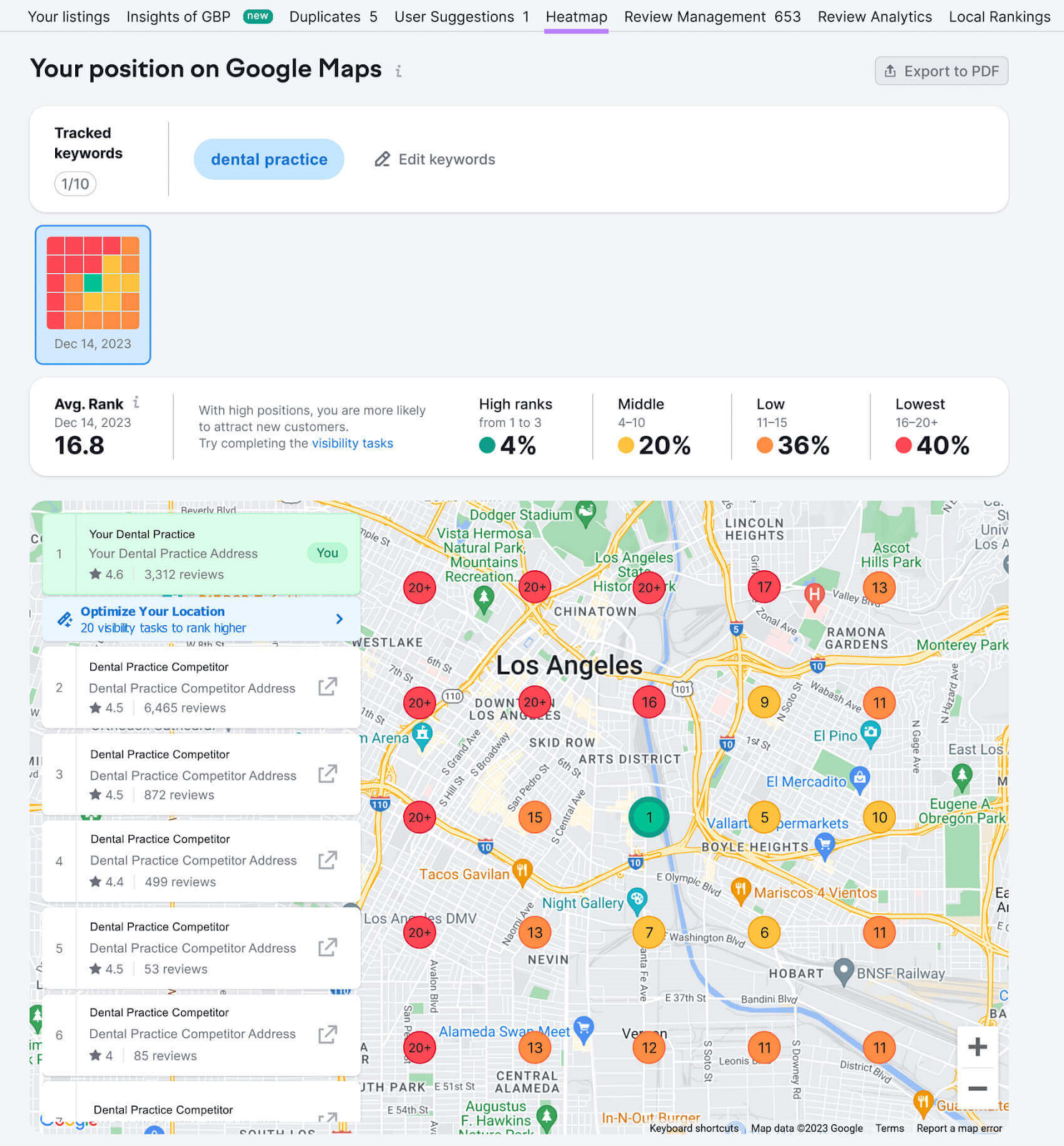
Enhance Your Dental SEO with Semrush
Semrush has all the tools you need to streamline dental SEO and get better results.
Check out these case studies to see how real practices have done it:
- Smileworks Liverpool achieves unprecedented traffic growth of 4773% with Semrush
- Independent marketer triples conversions for a dental clinic through blog posts in 6 months
Or create your account to jump straight in.
.svg)